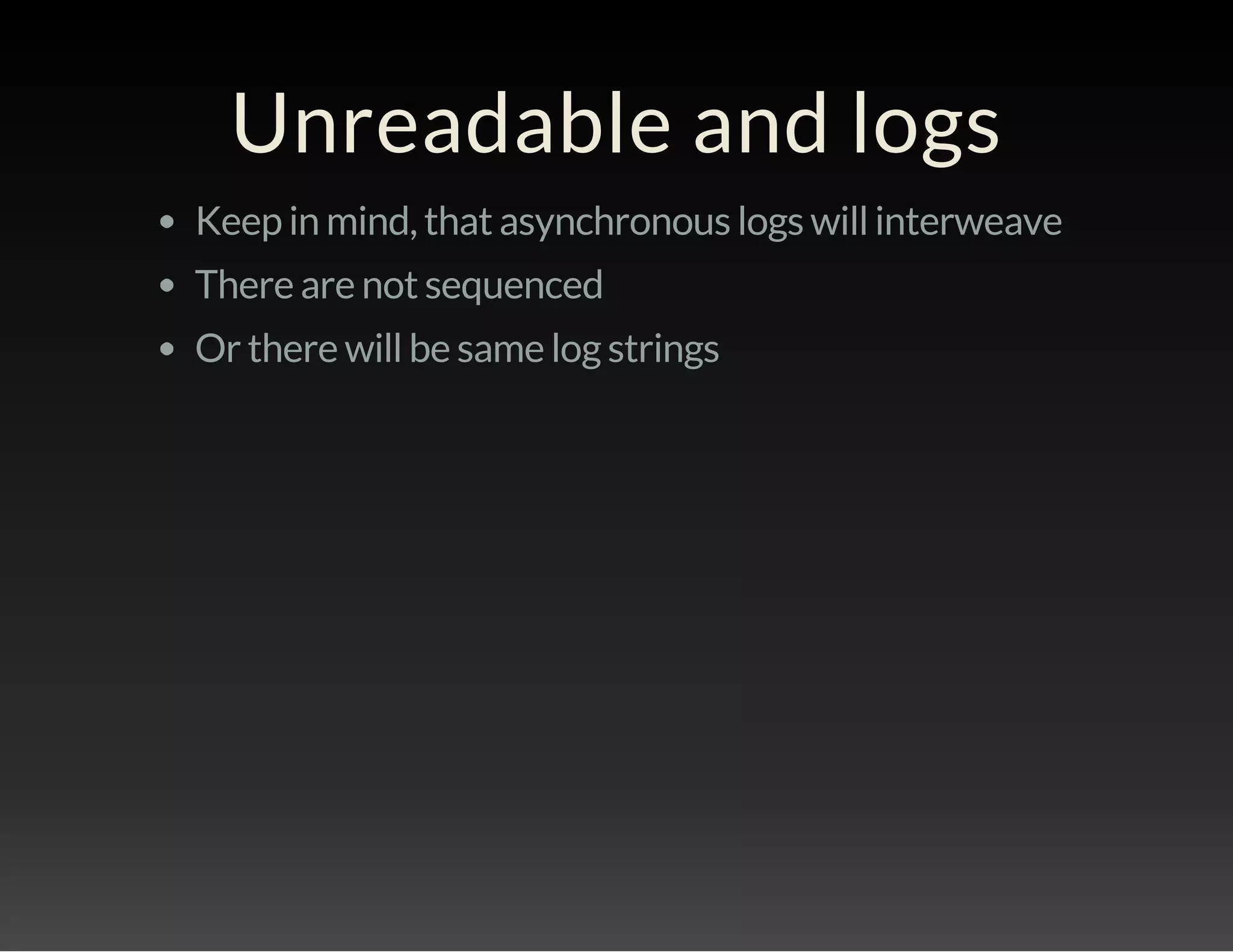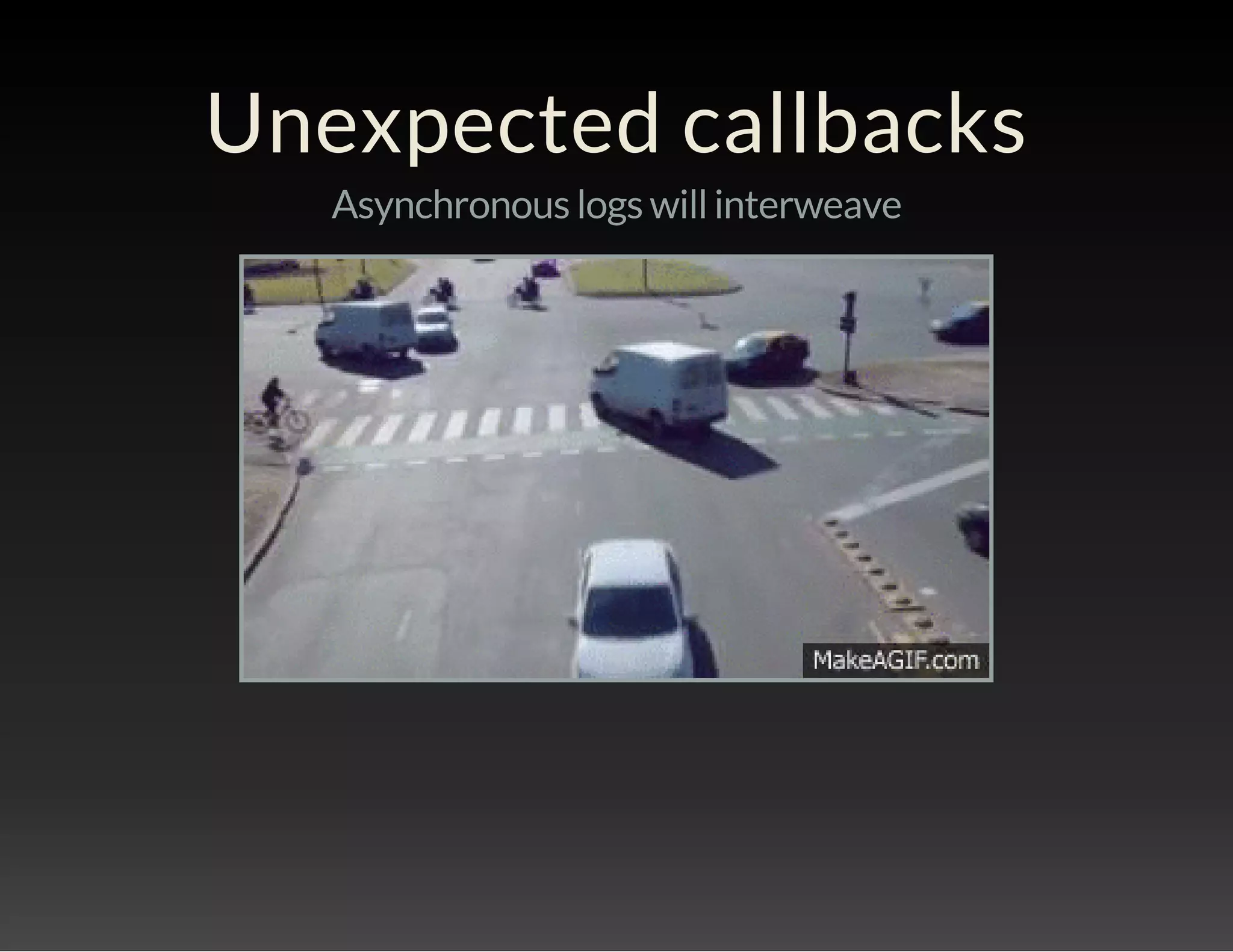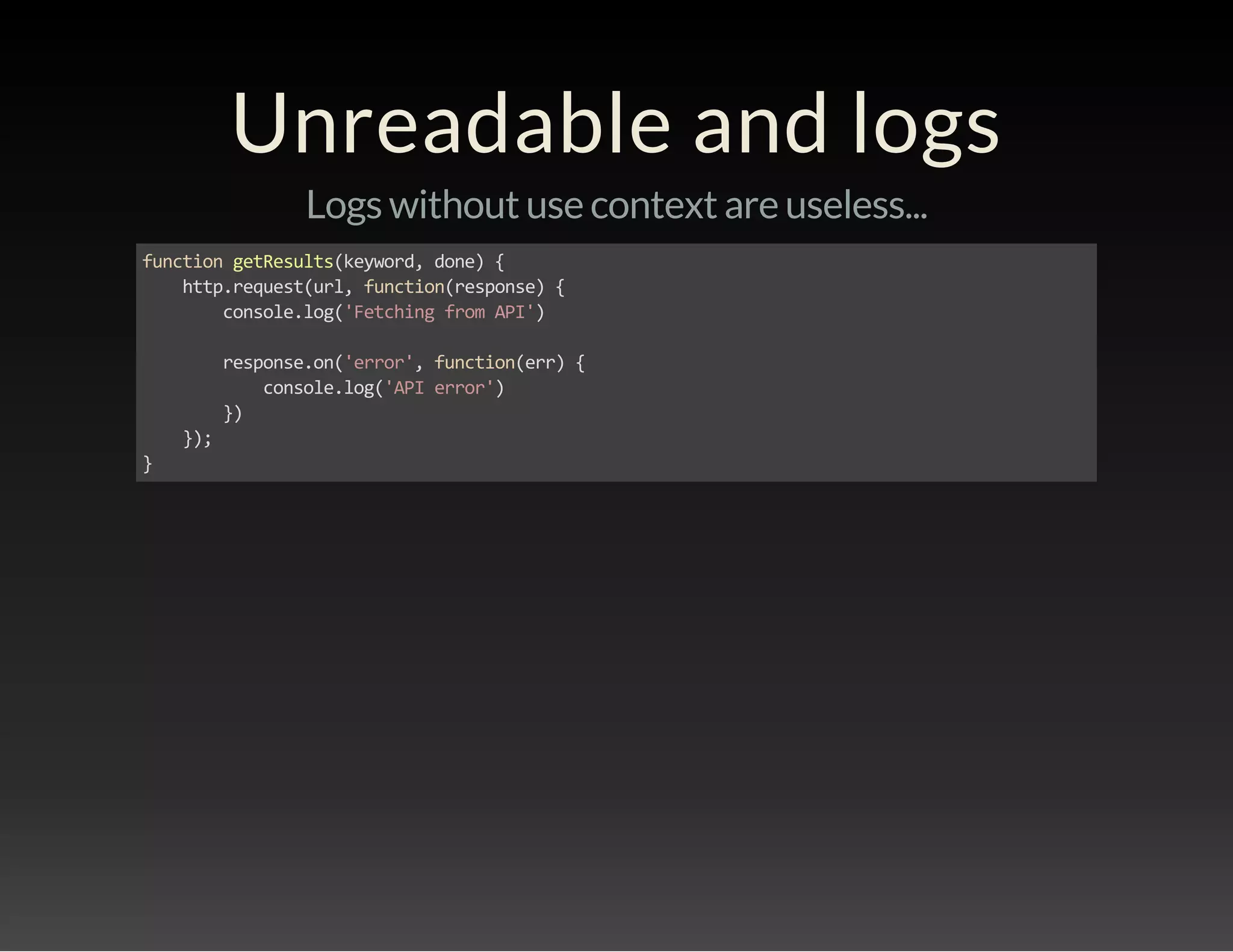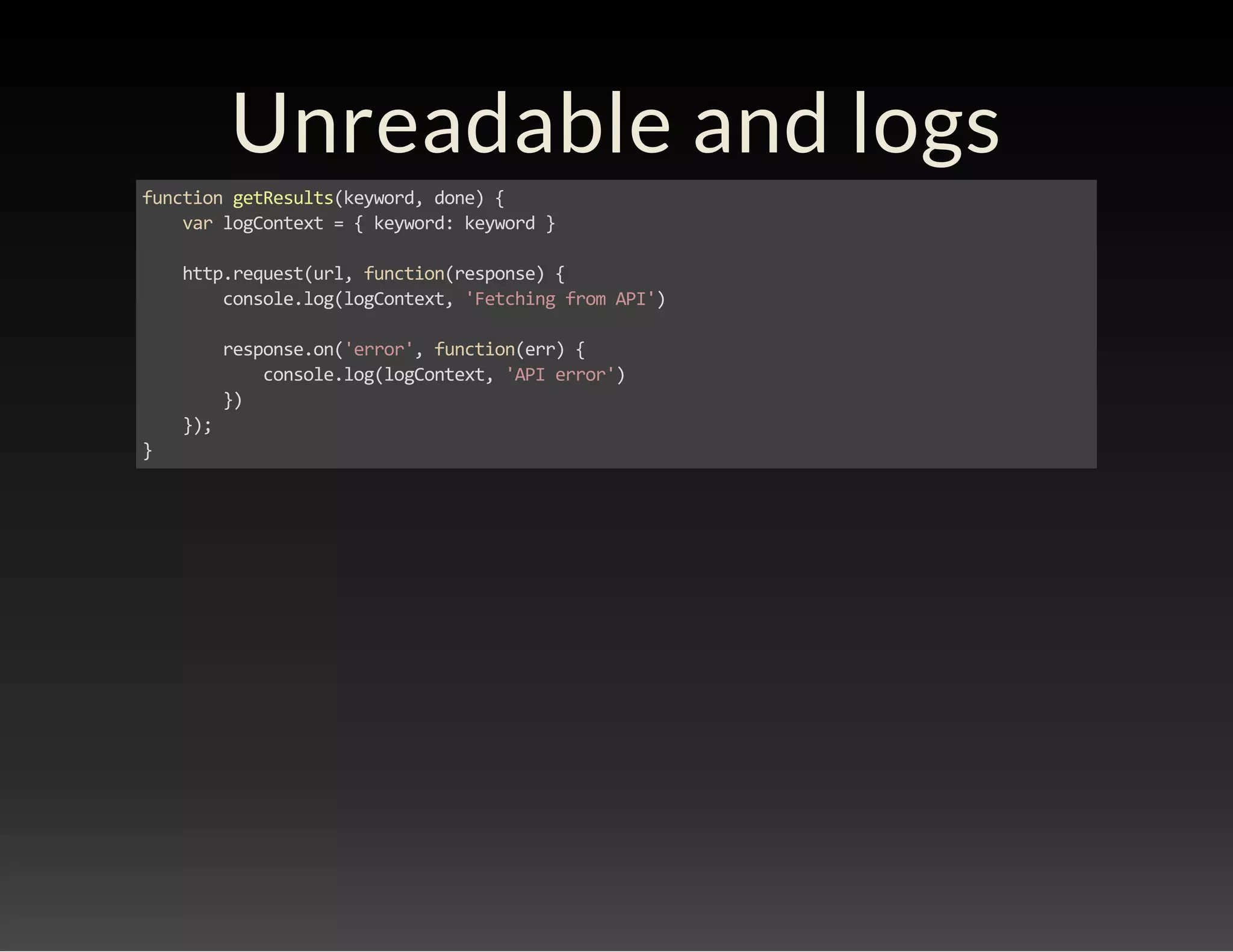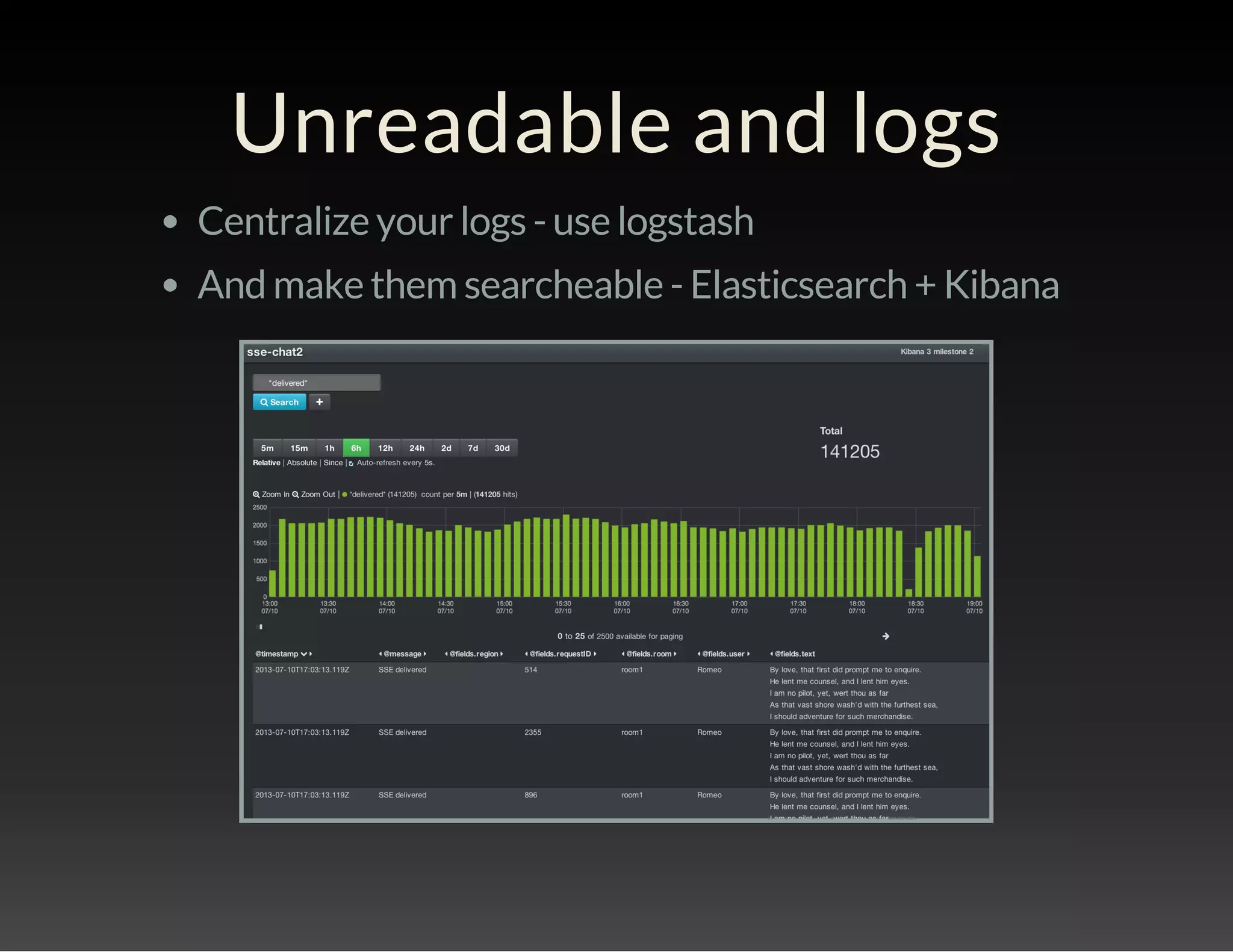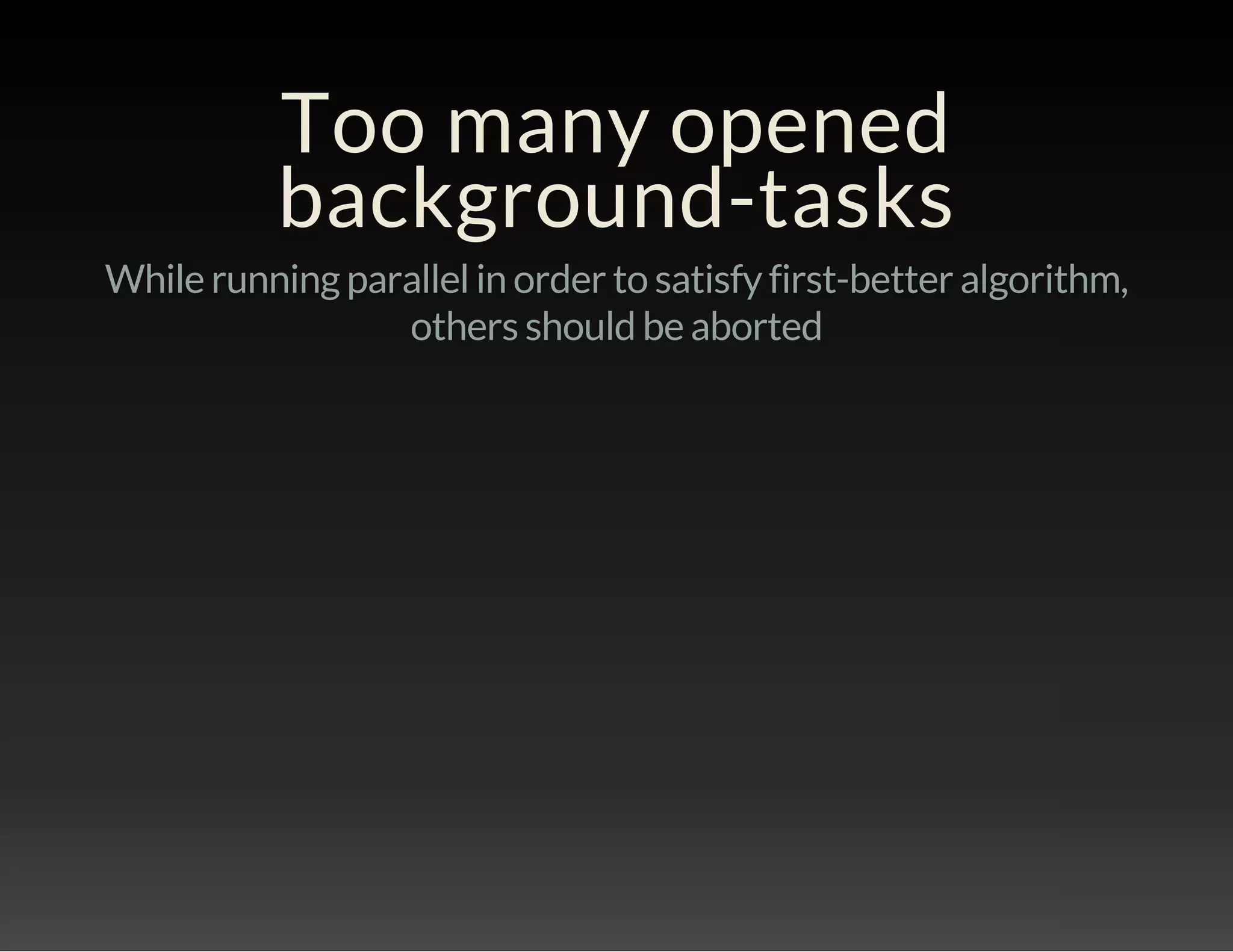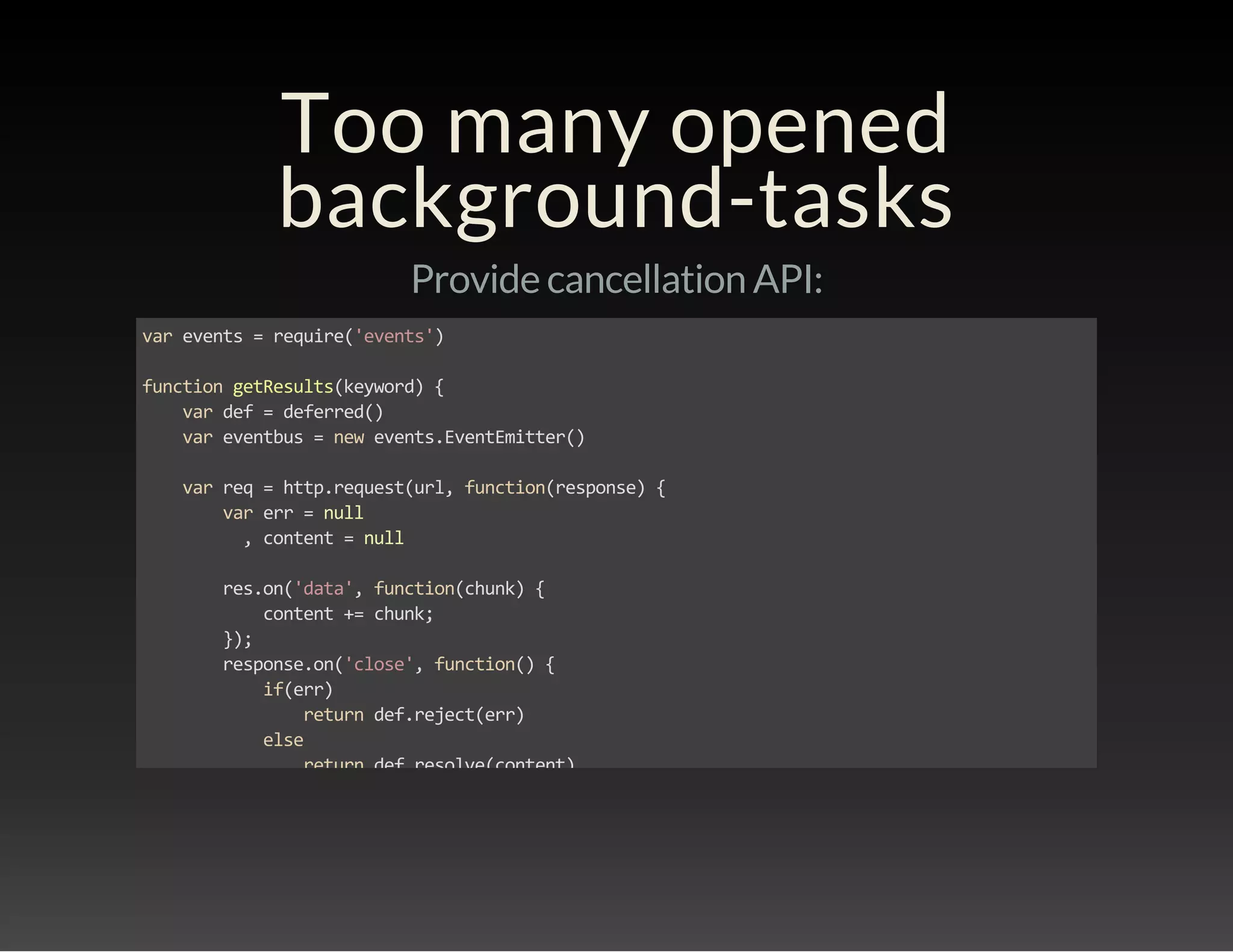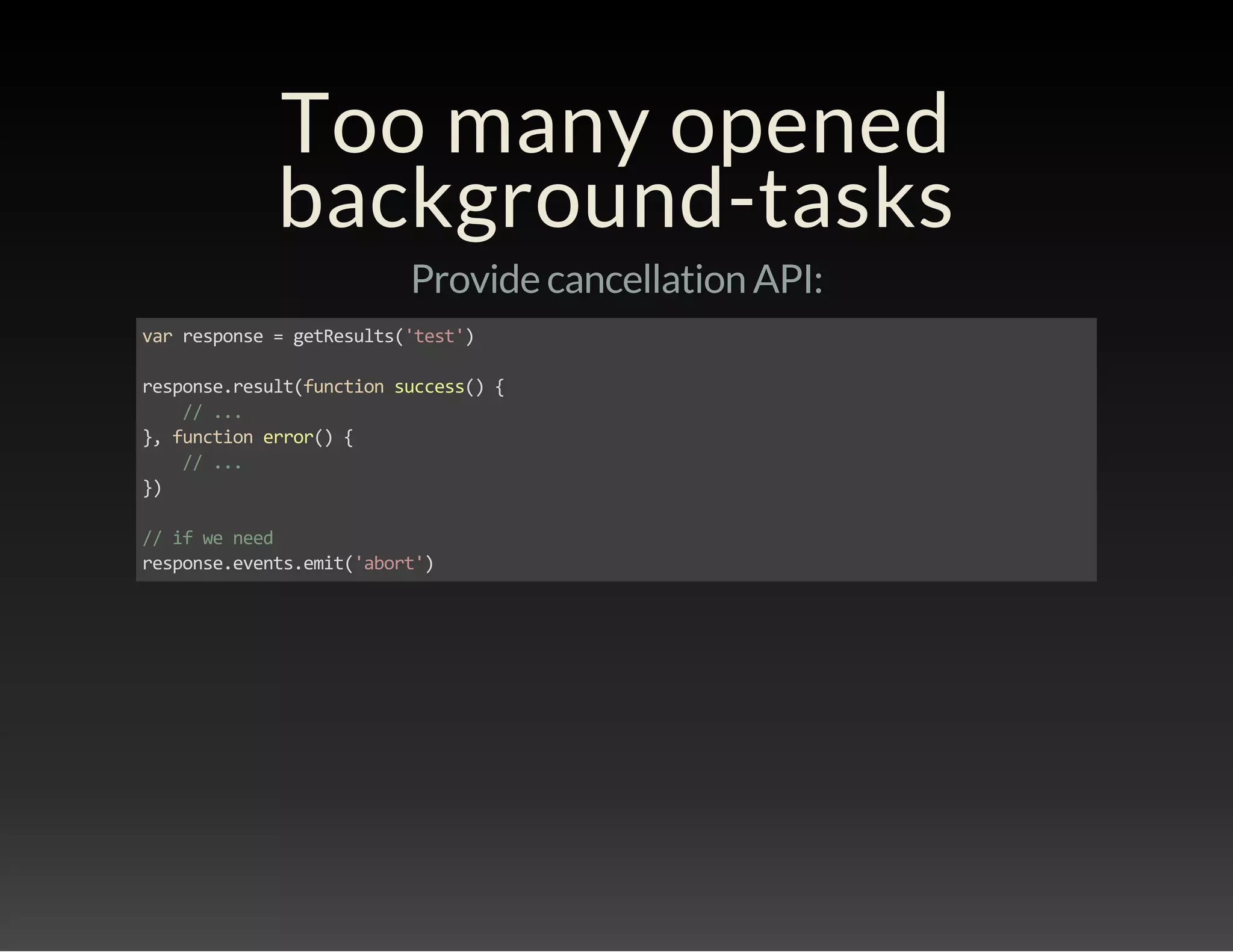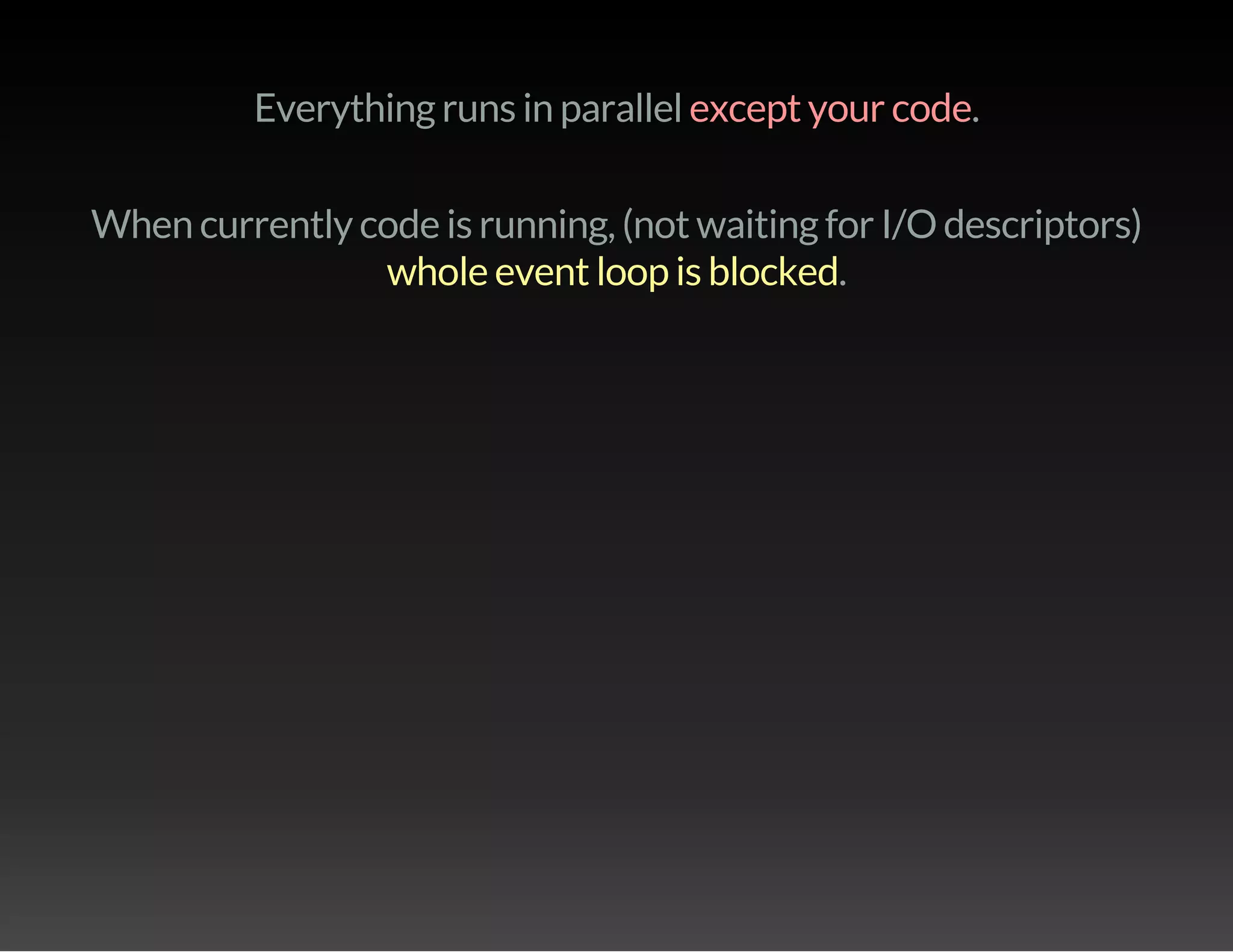This document discusses asynchronous programming and avoiding race conditions. It covers how asynchronous actions allow the main program flow to continue processing without blocking on I/O. It also discusses how asynchronous programming works with callbacks and promises rather than sequential execution. It provides examples of using libraries like Async to control asynchronous flows and common pitfalls to avoid like double callbacks and unexpected asynchronous behavior.




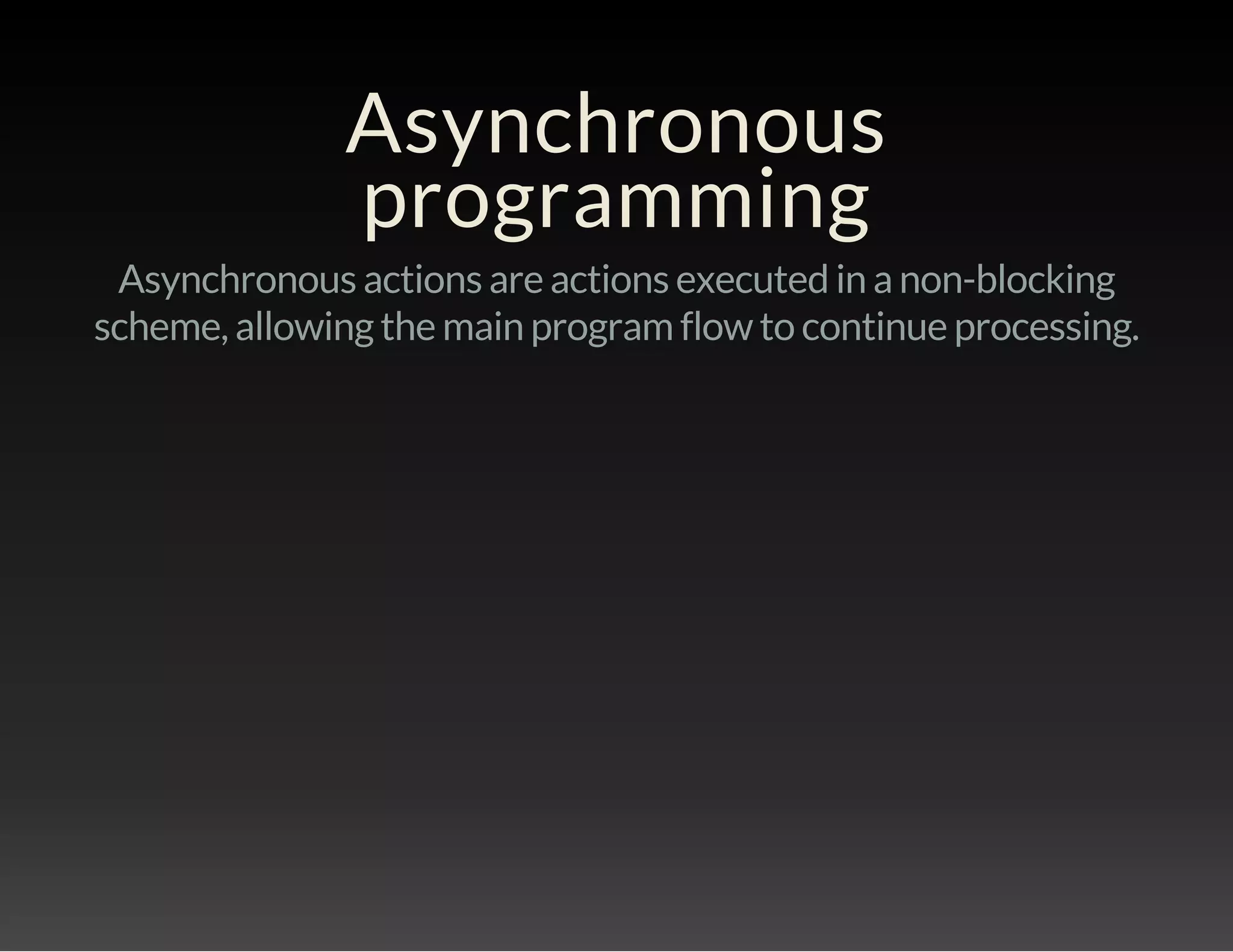
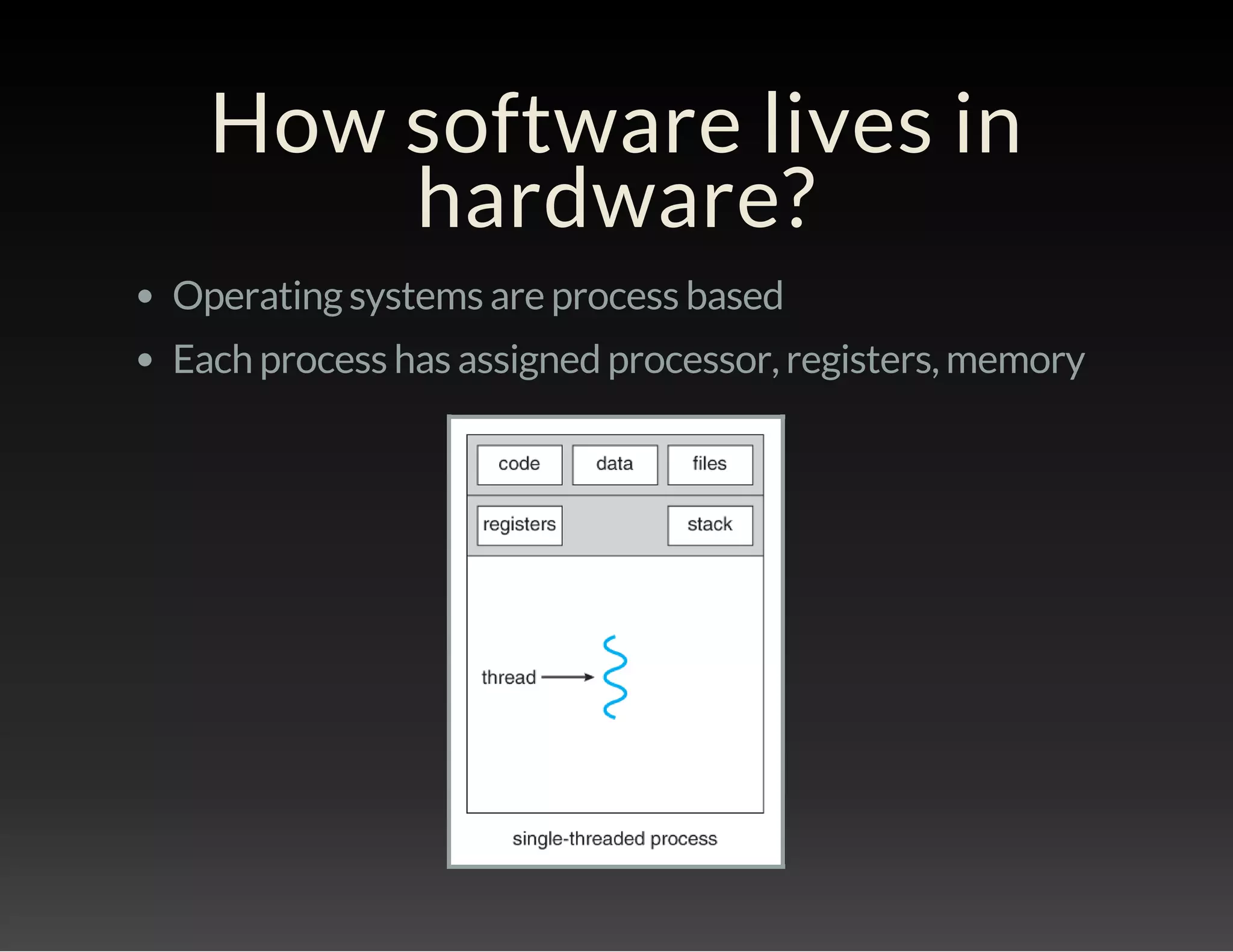
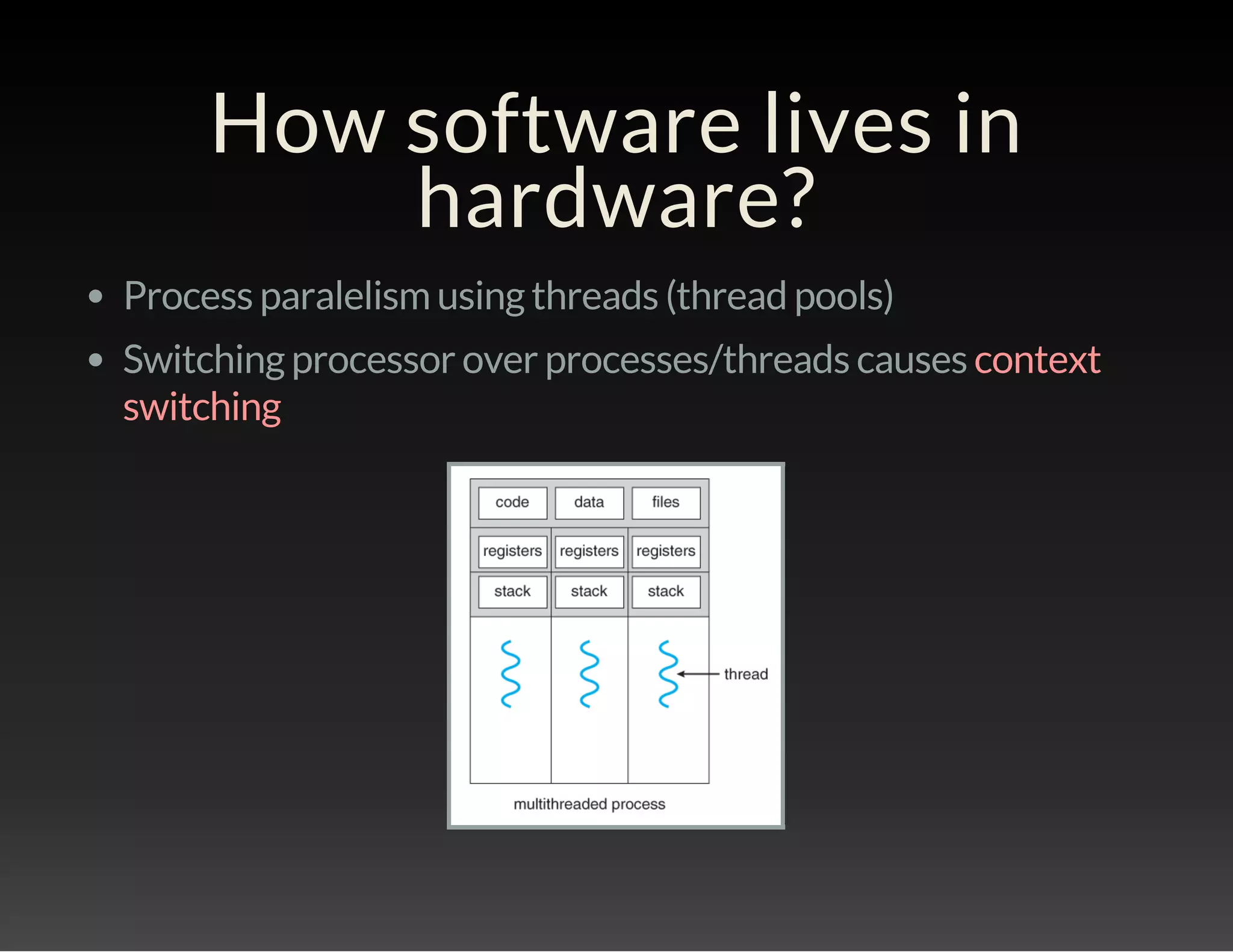
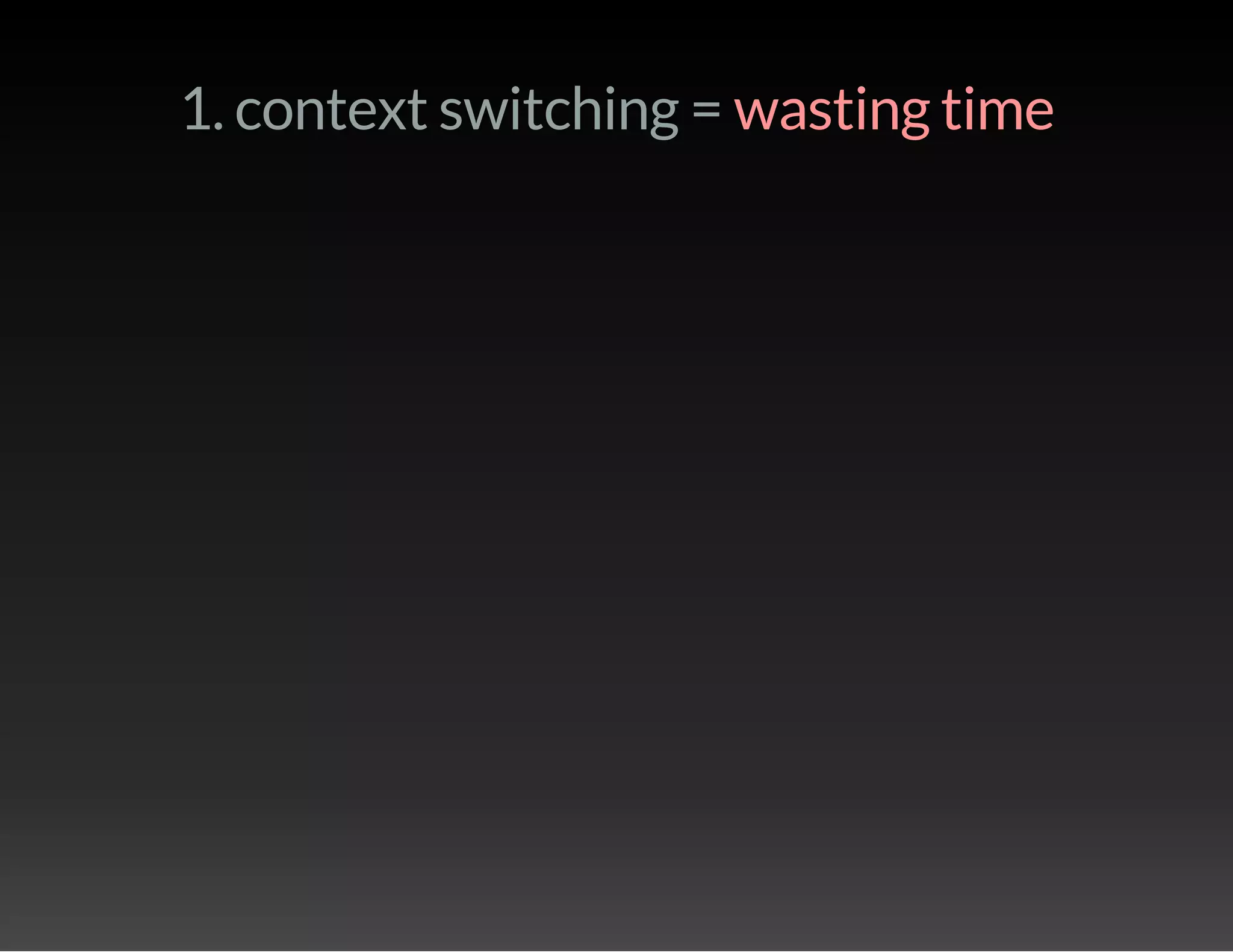
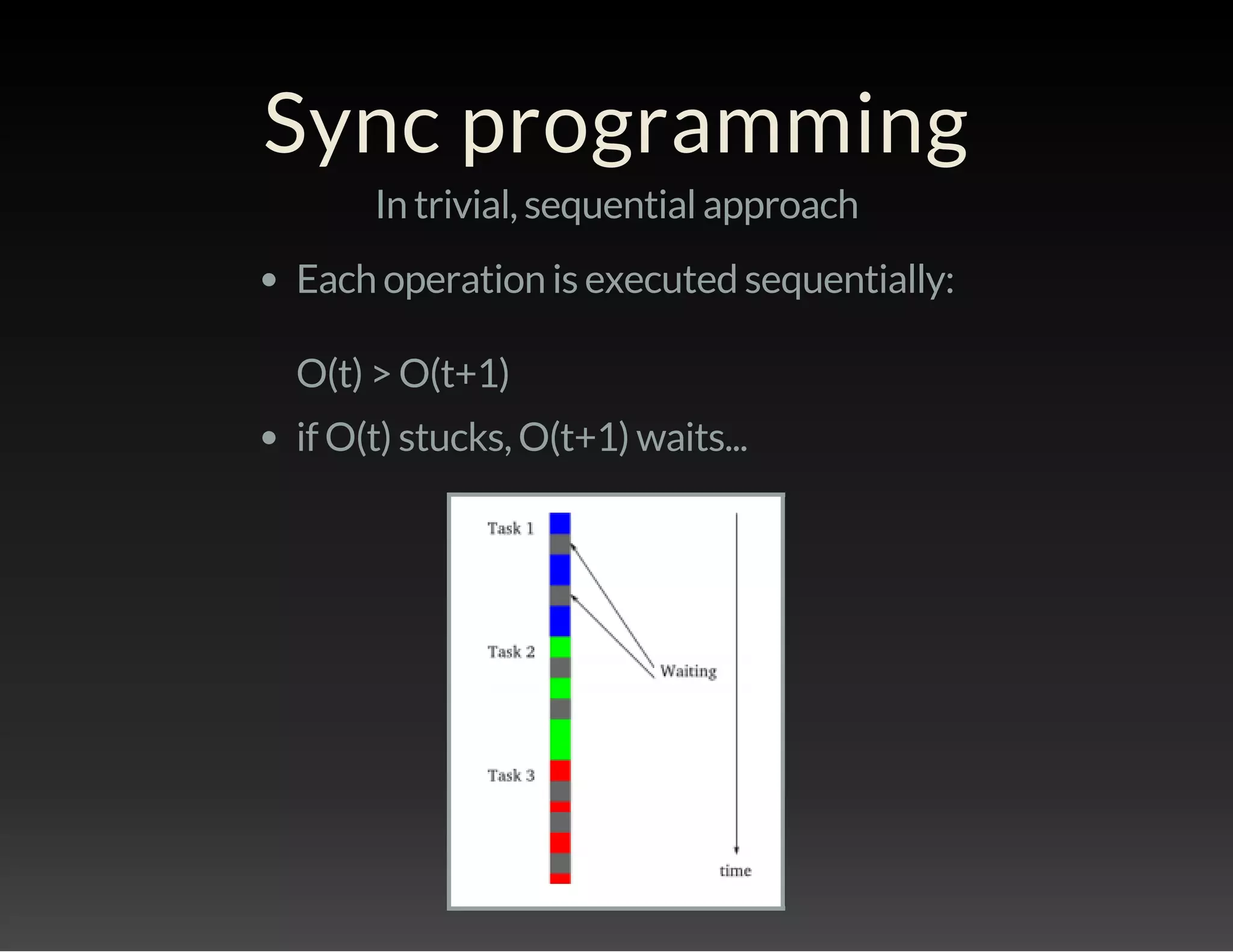
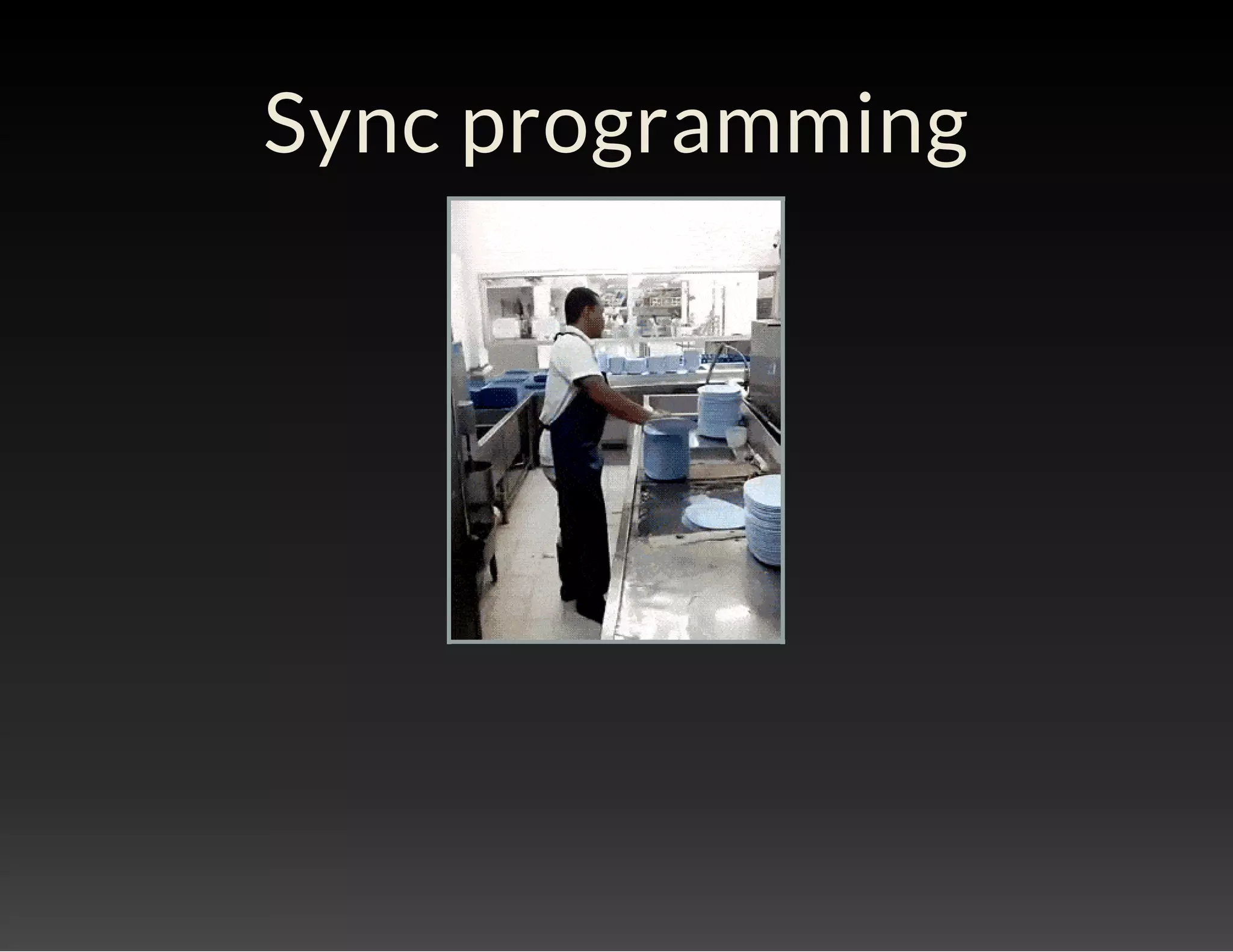
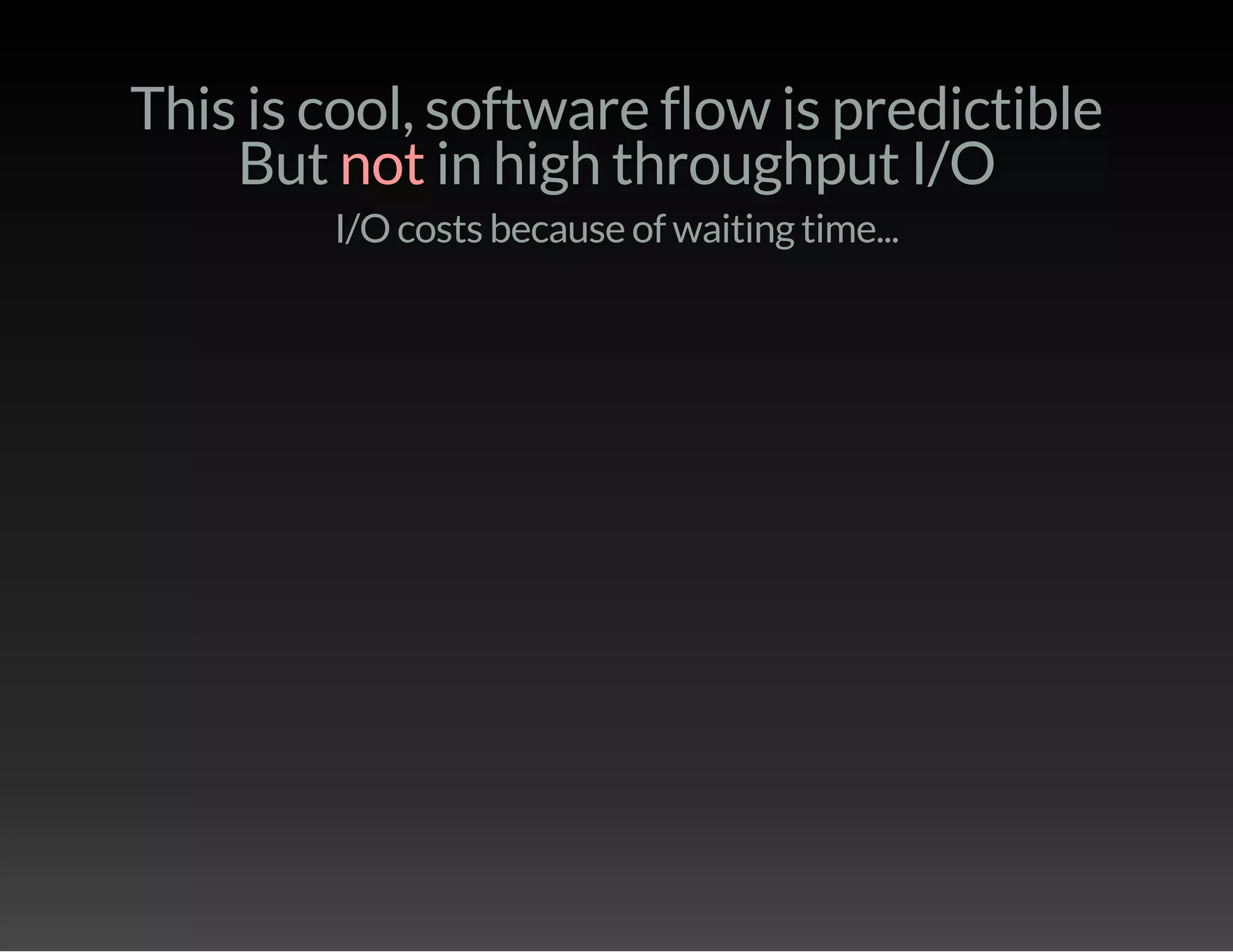
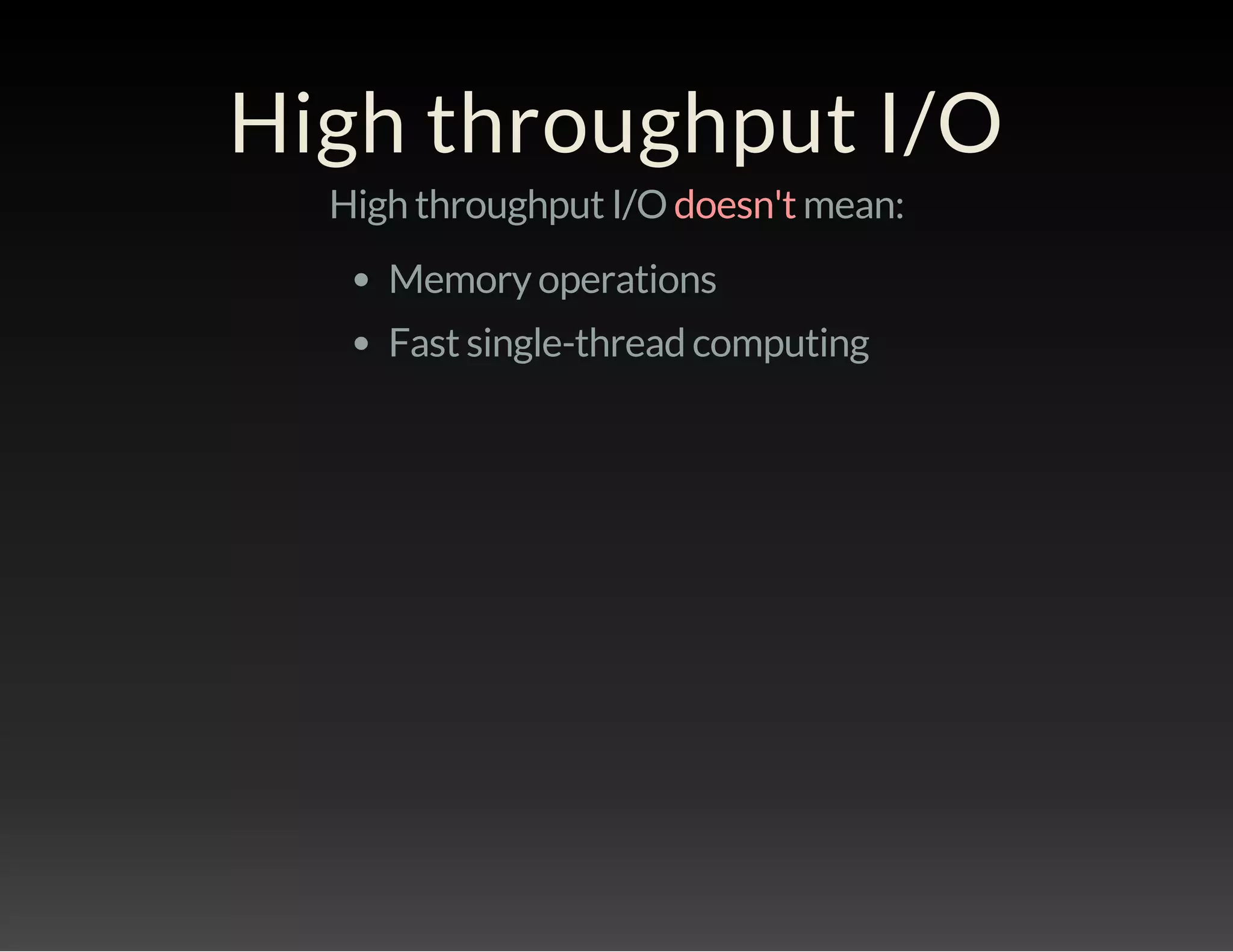
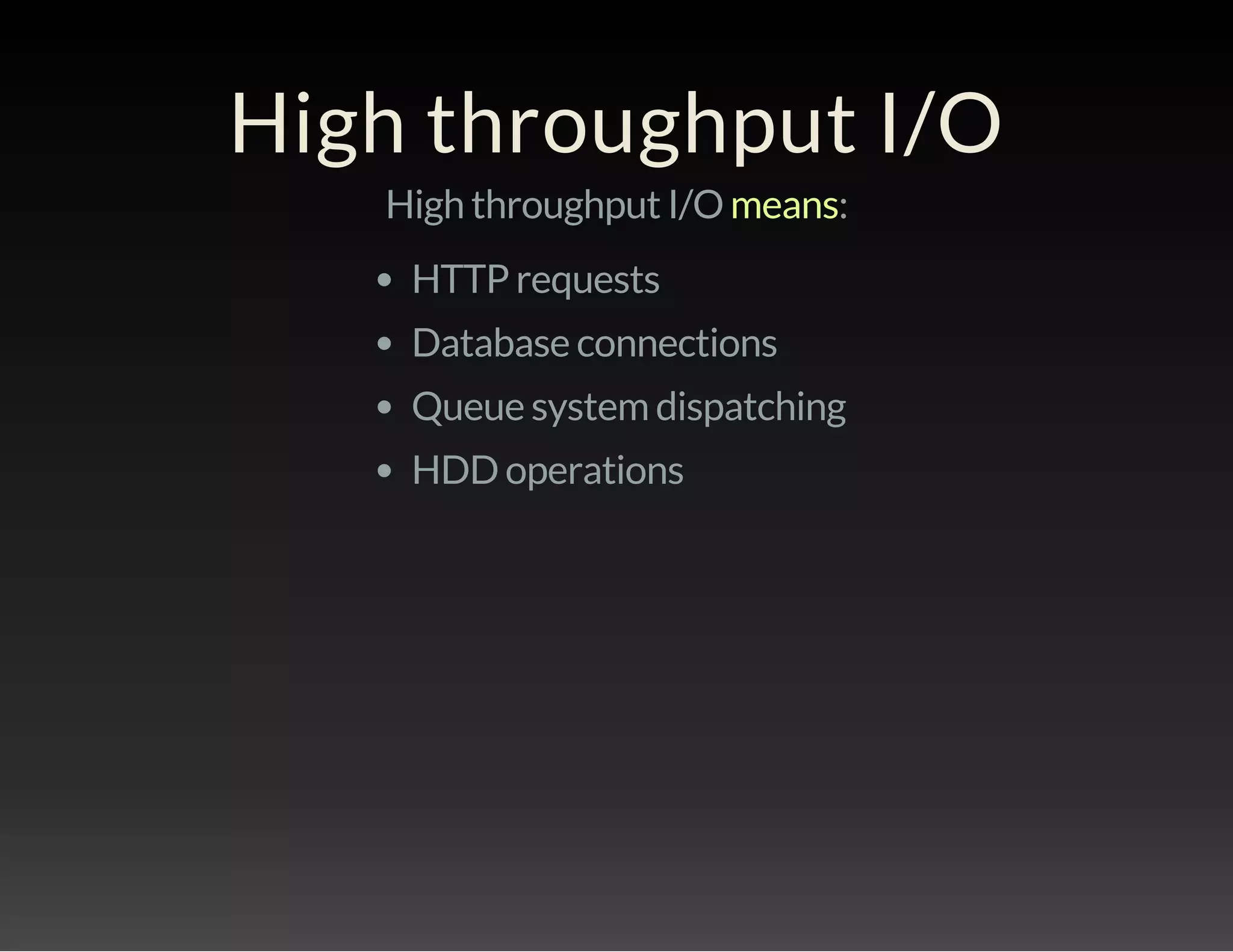

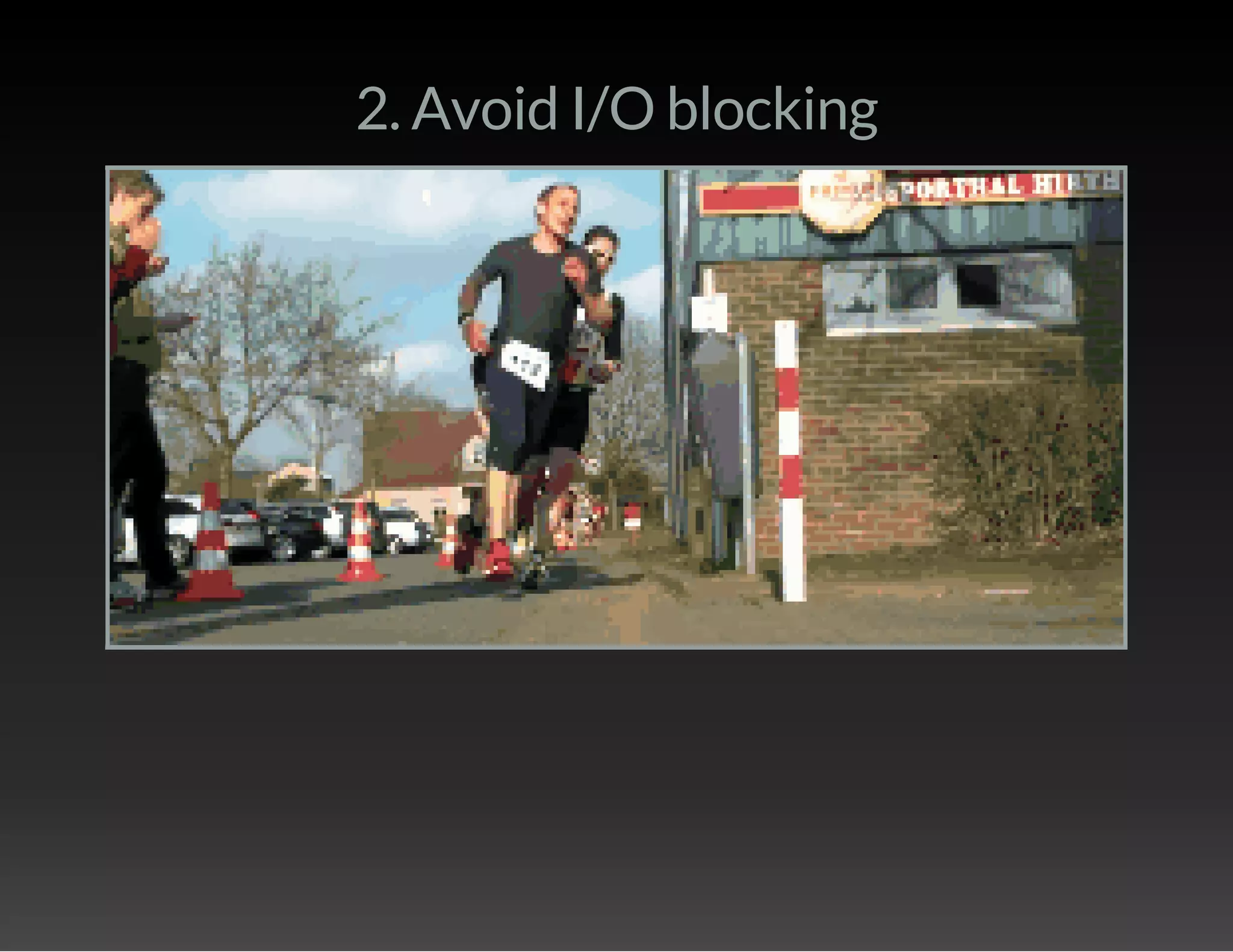
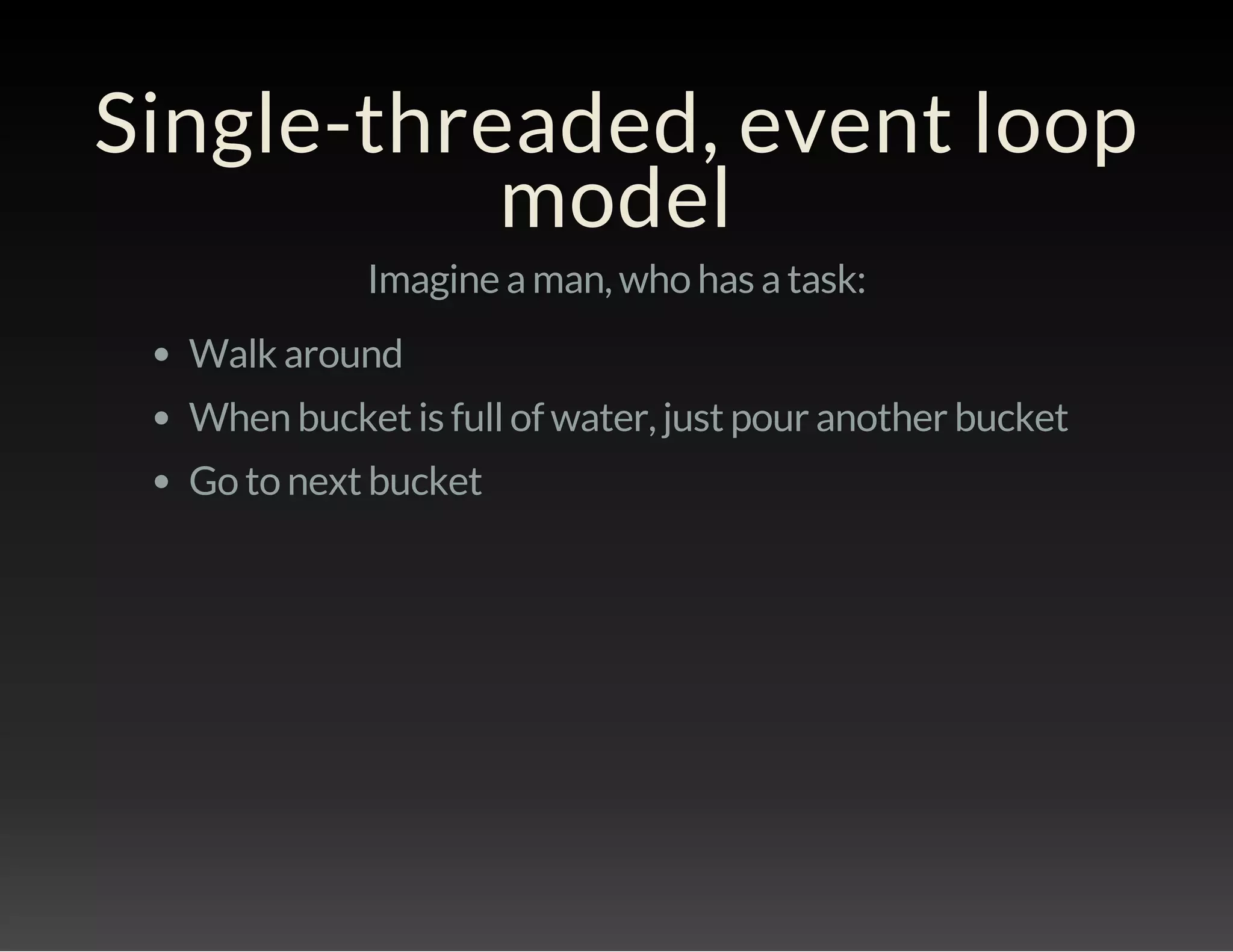
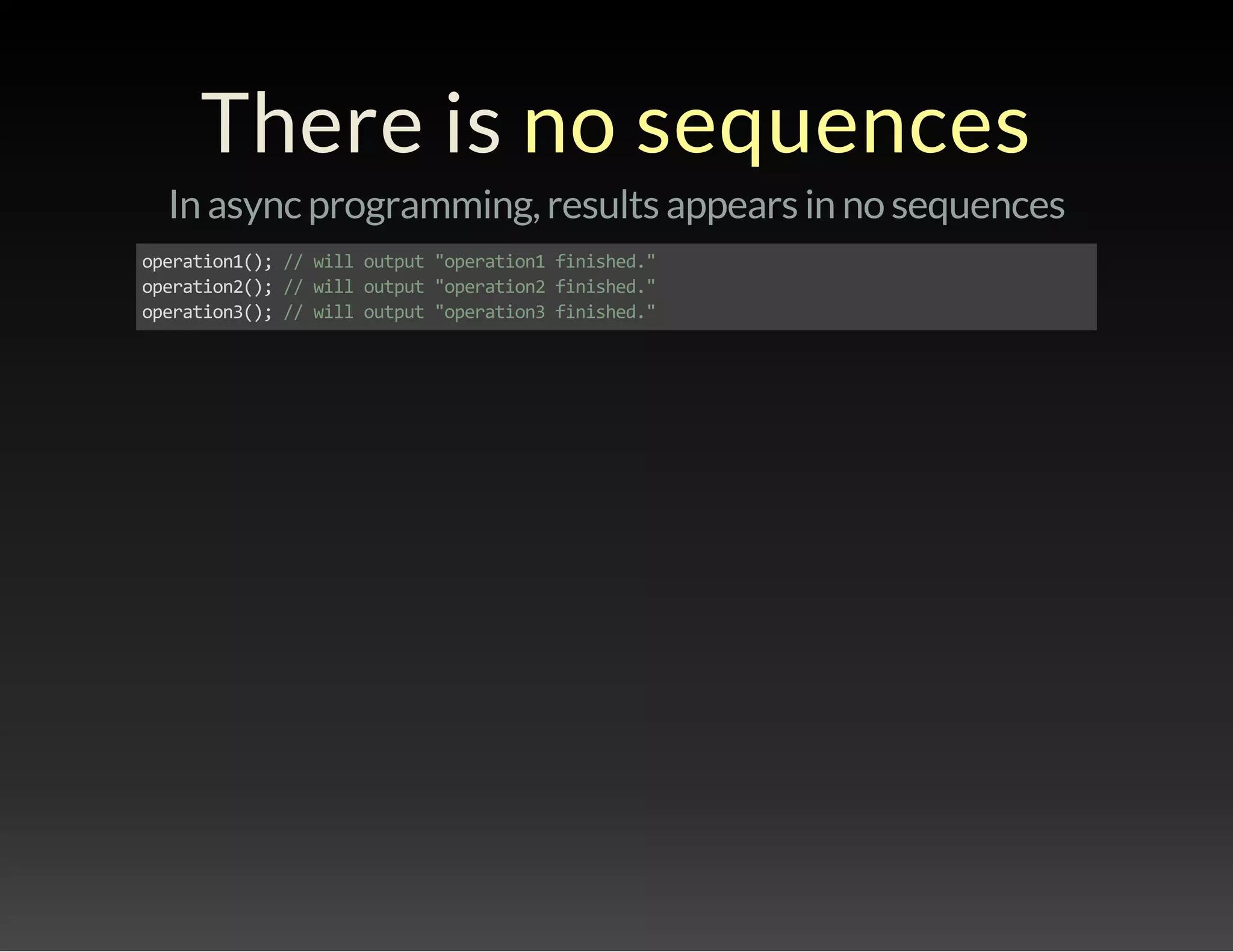
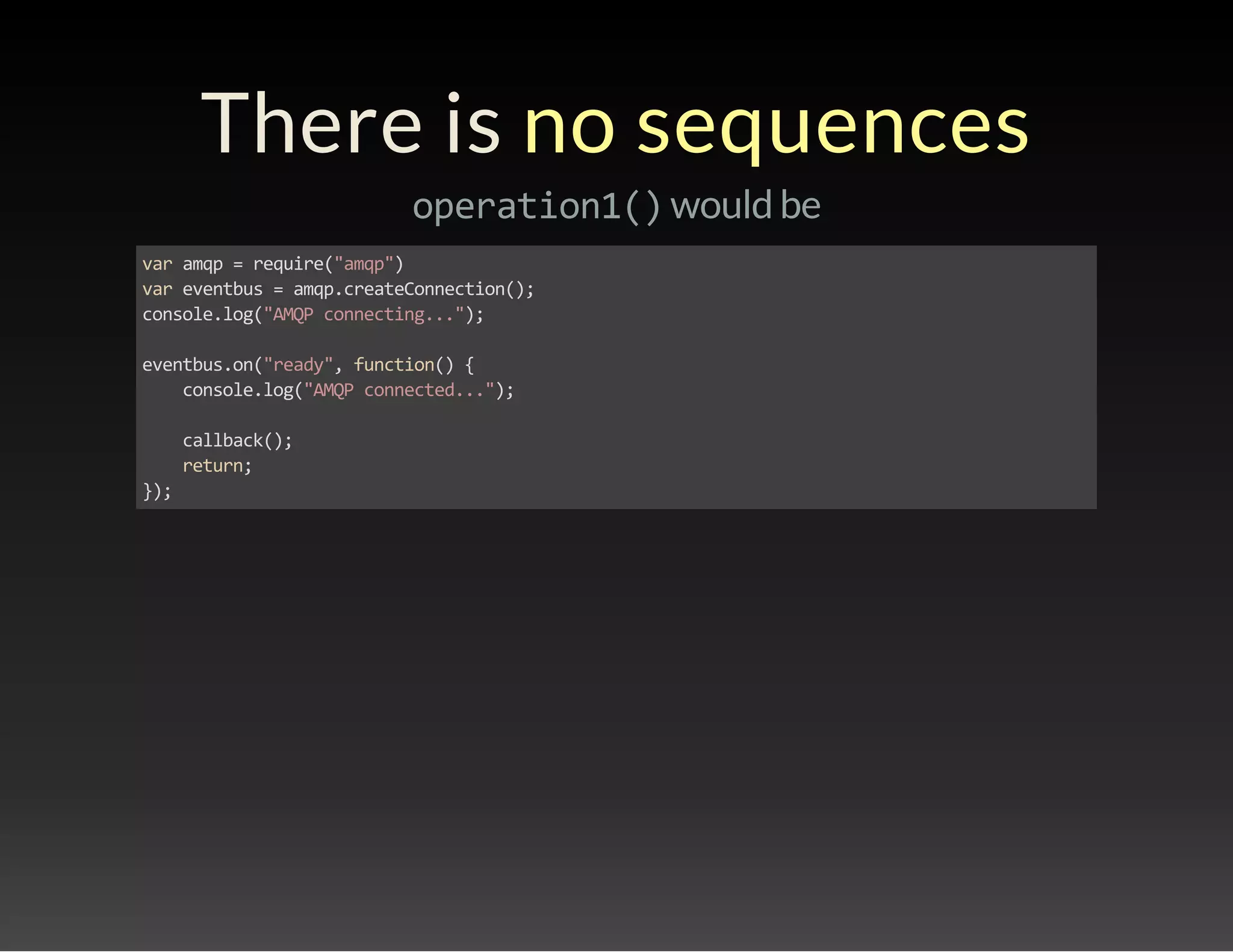
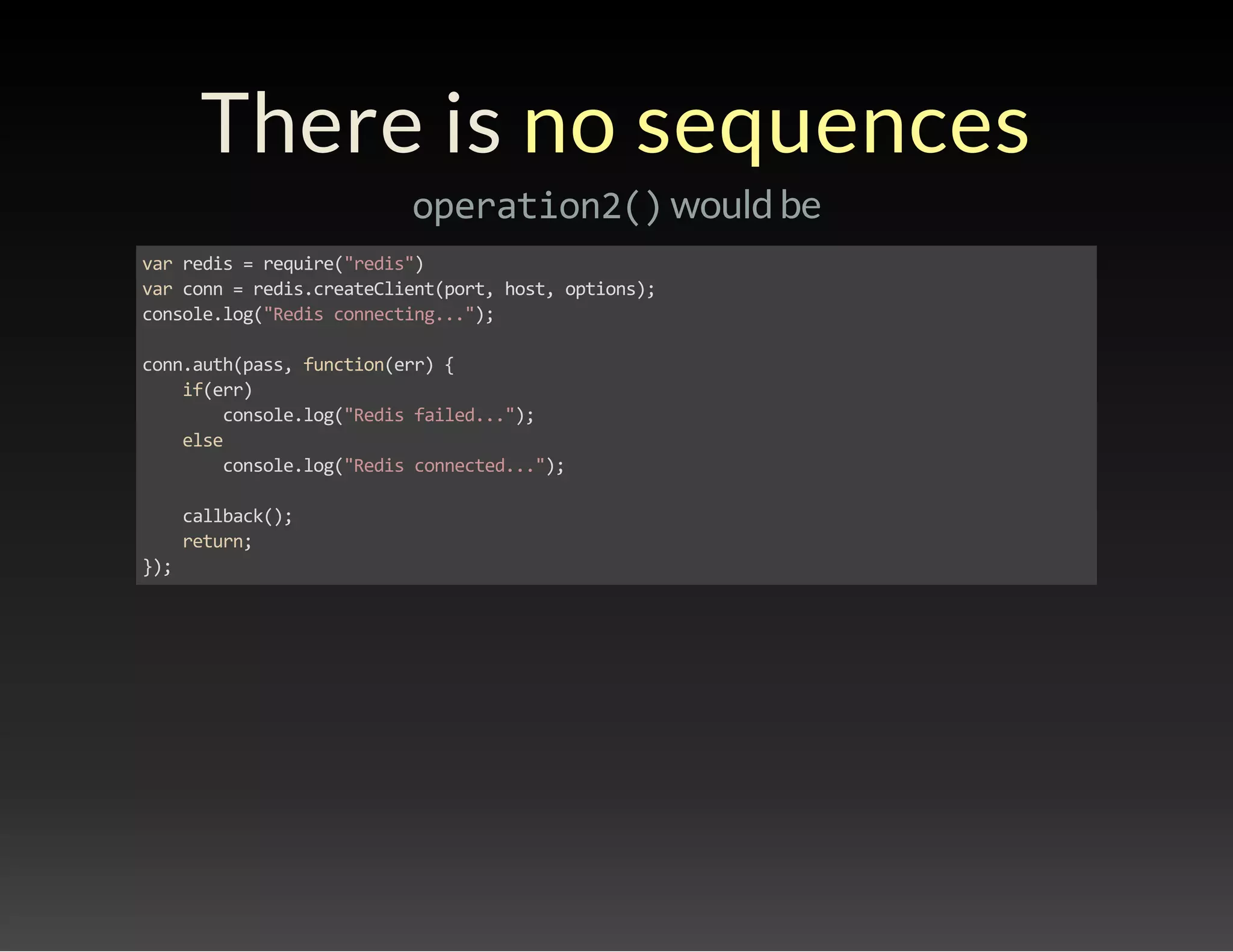
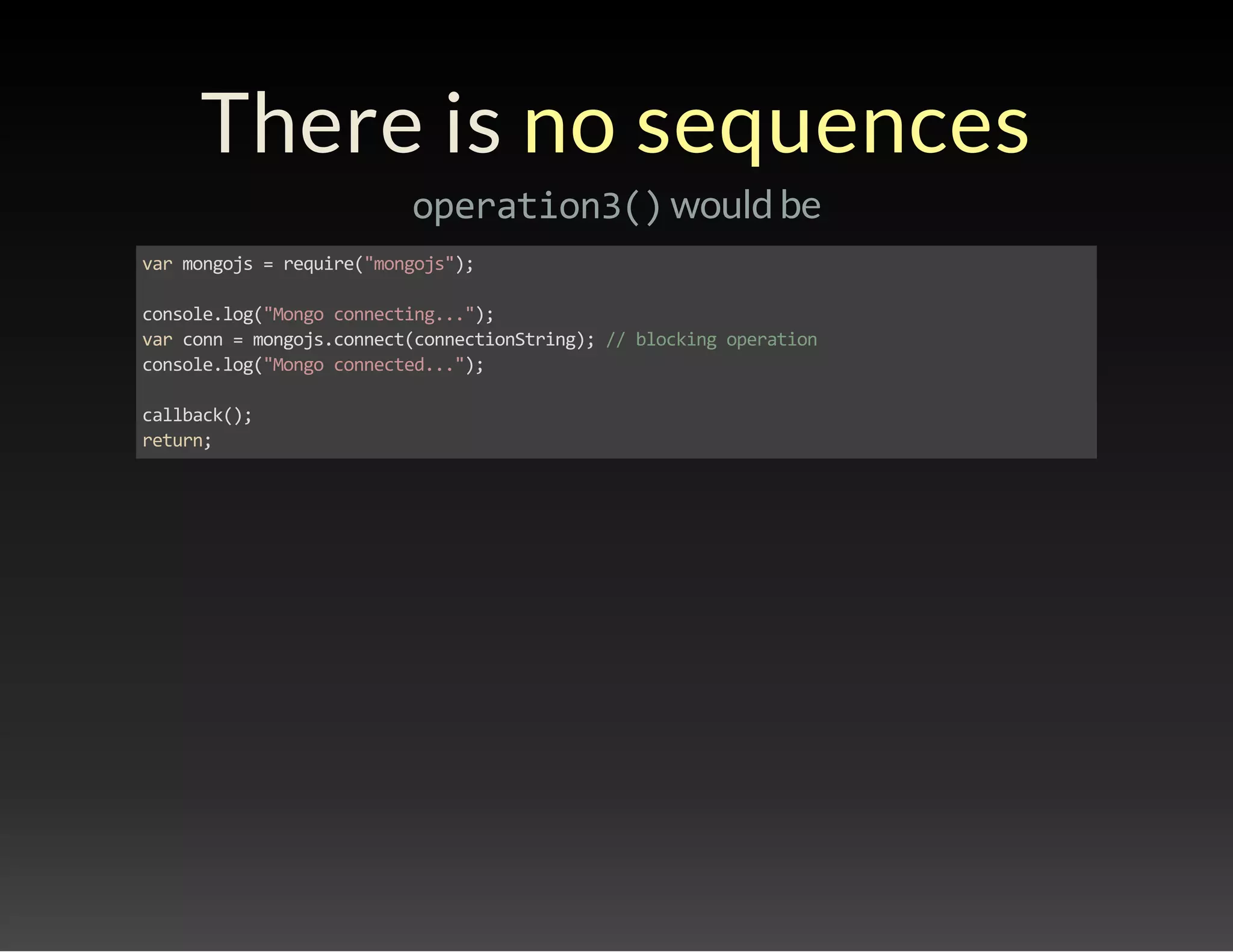
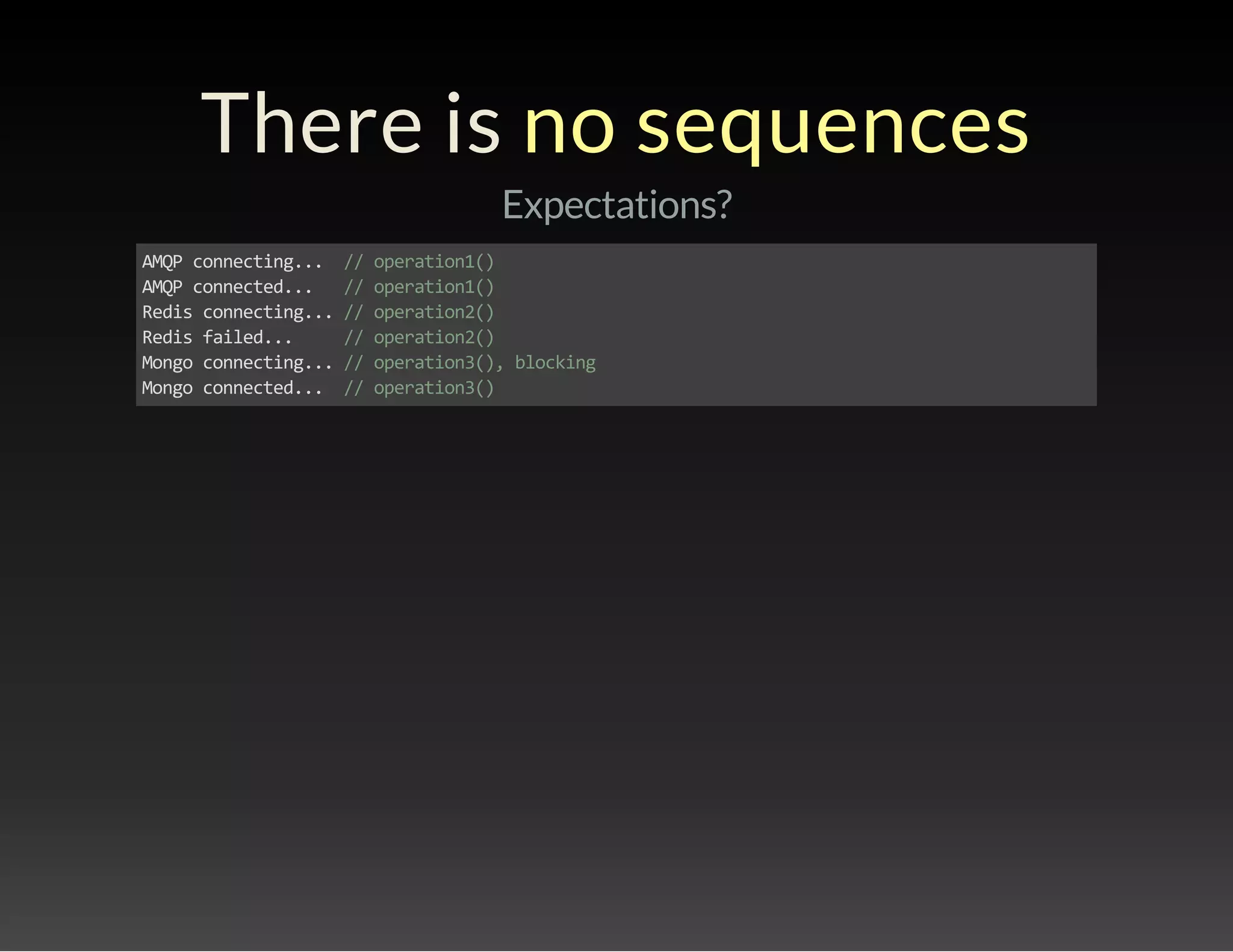

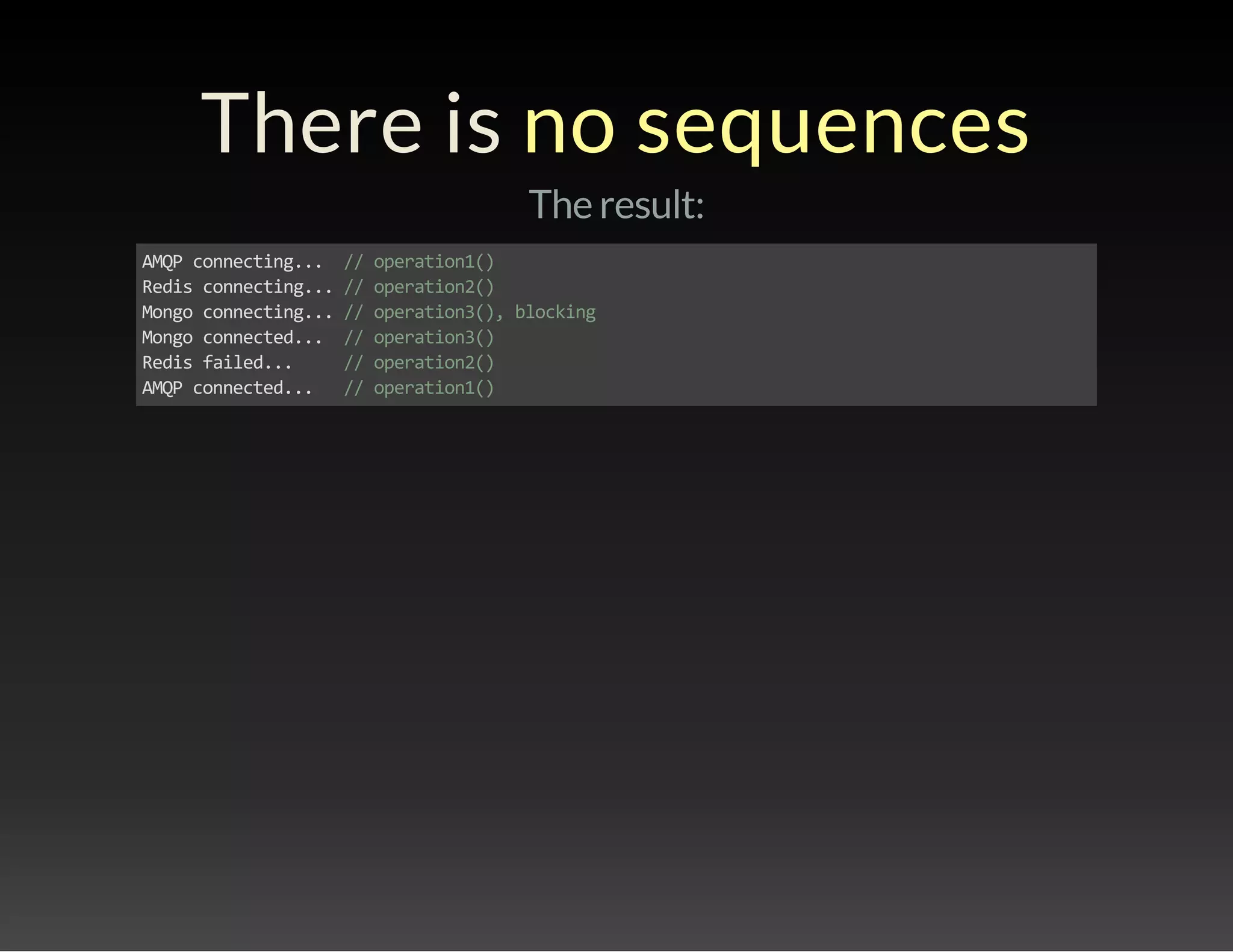
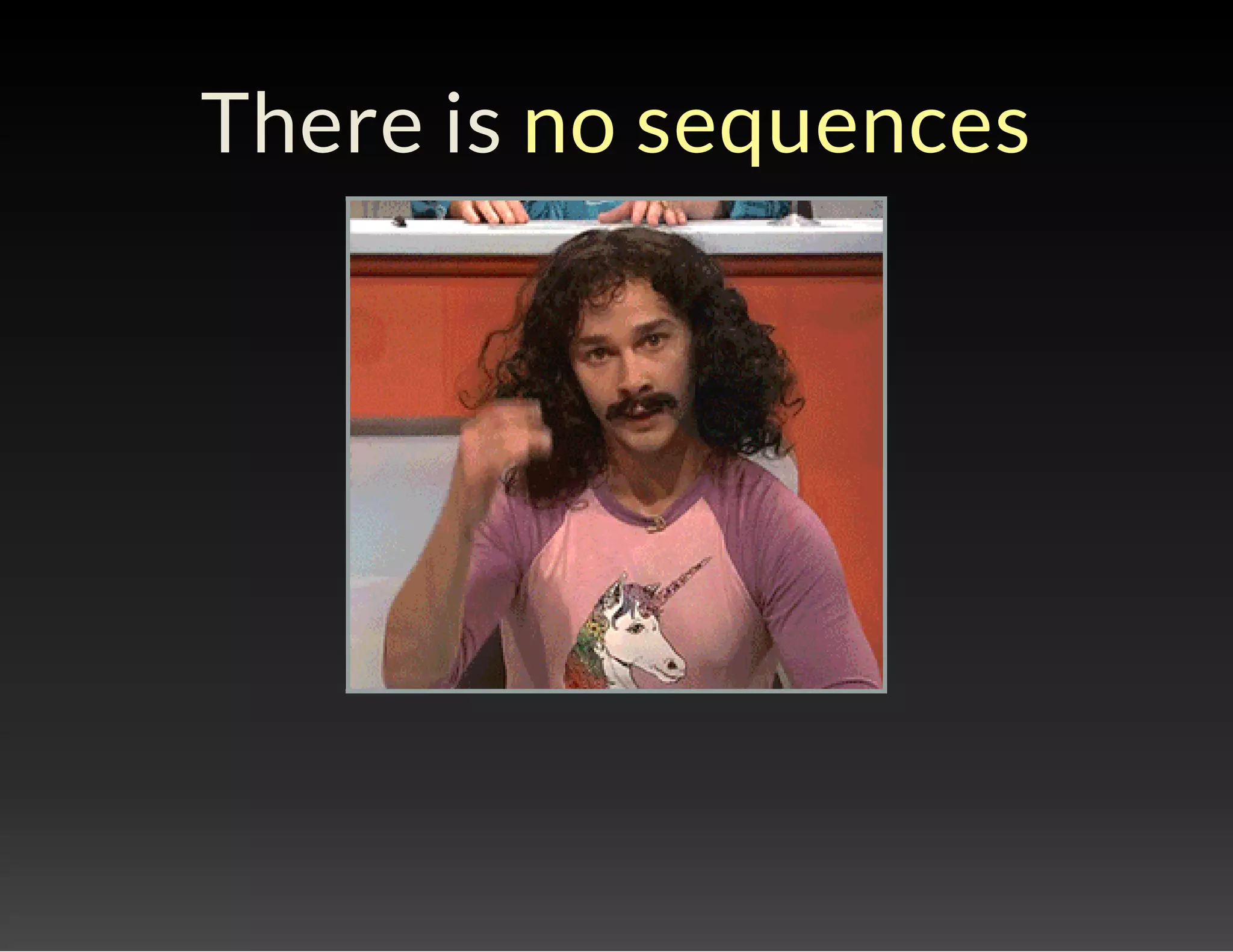
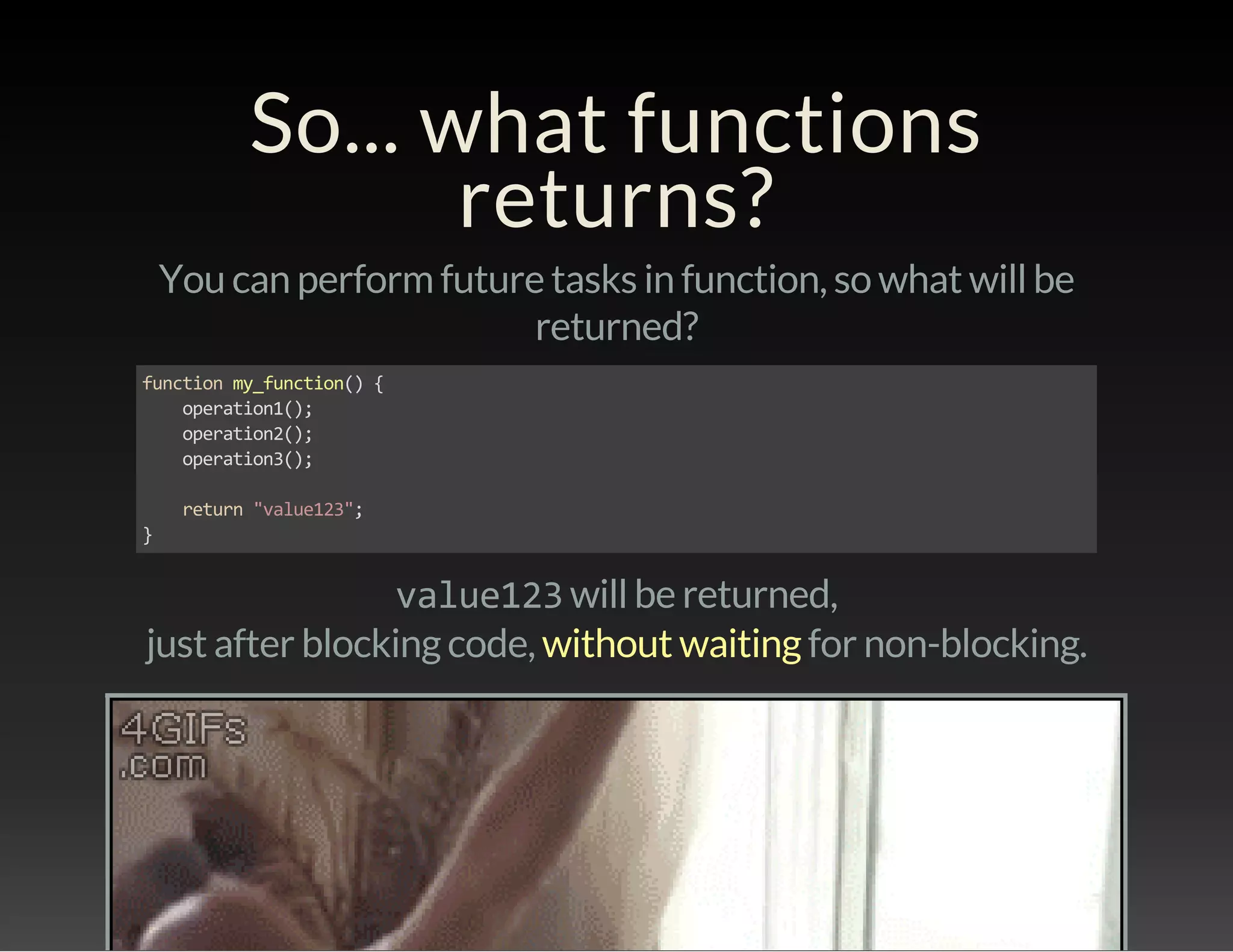
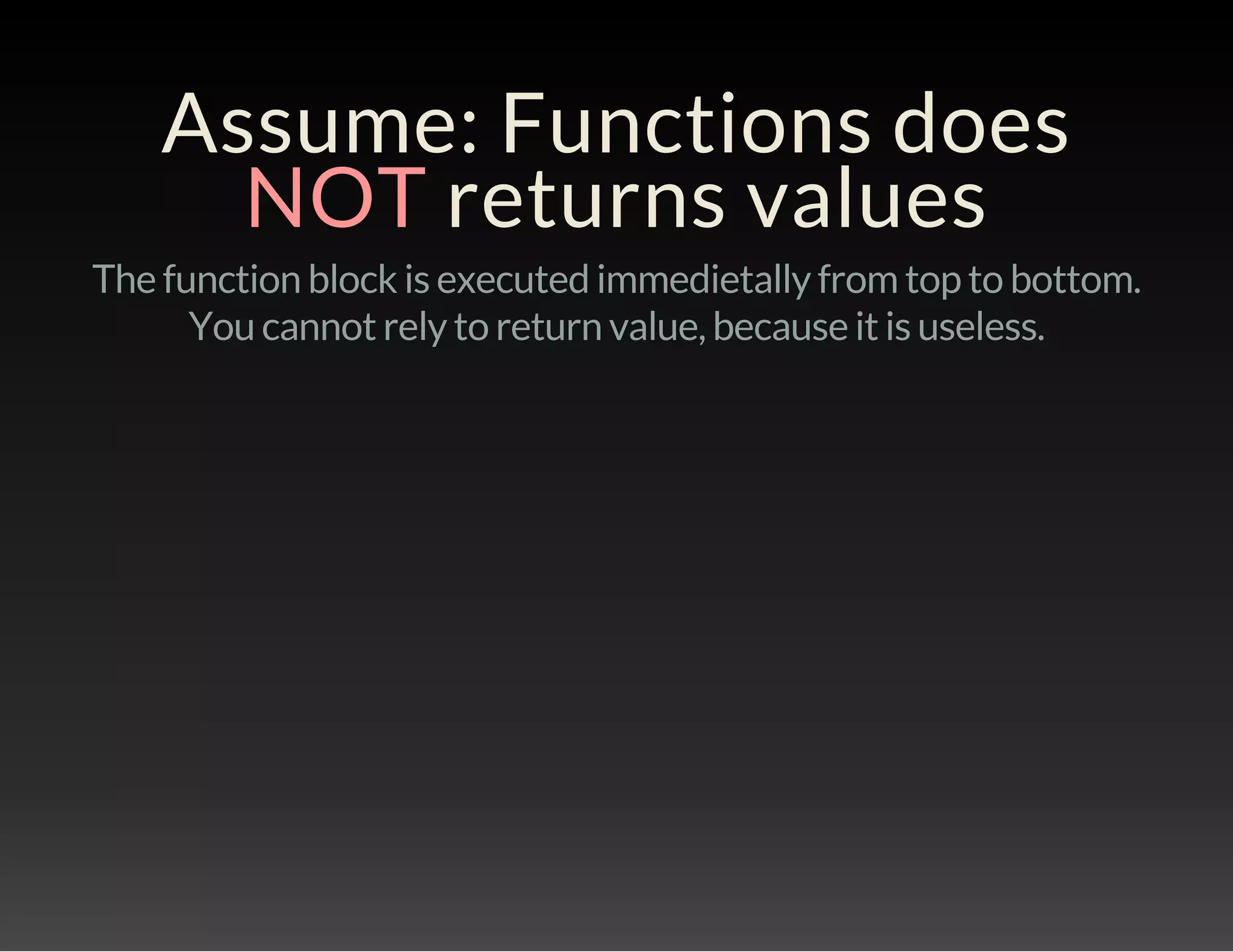
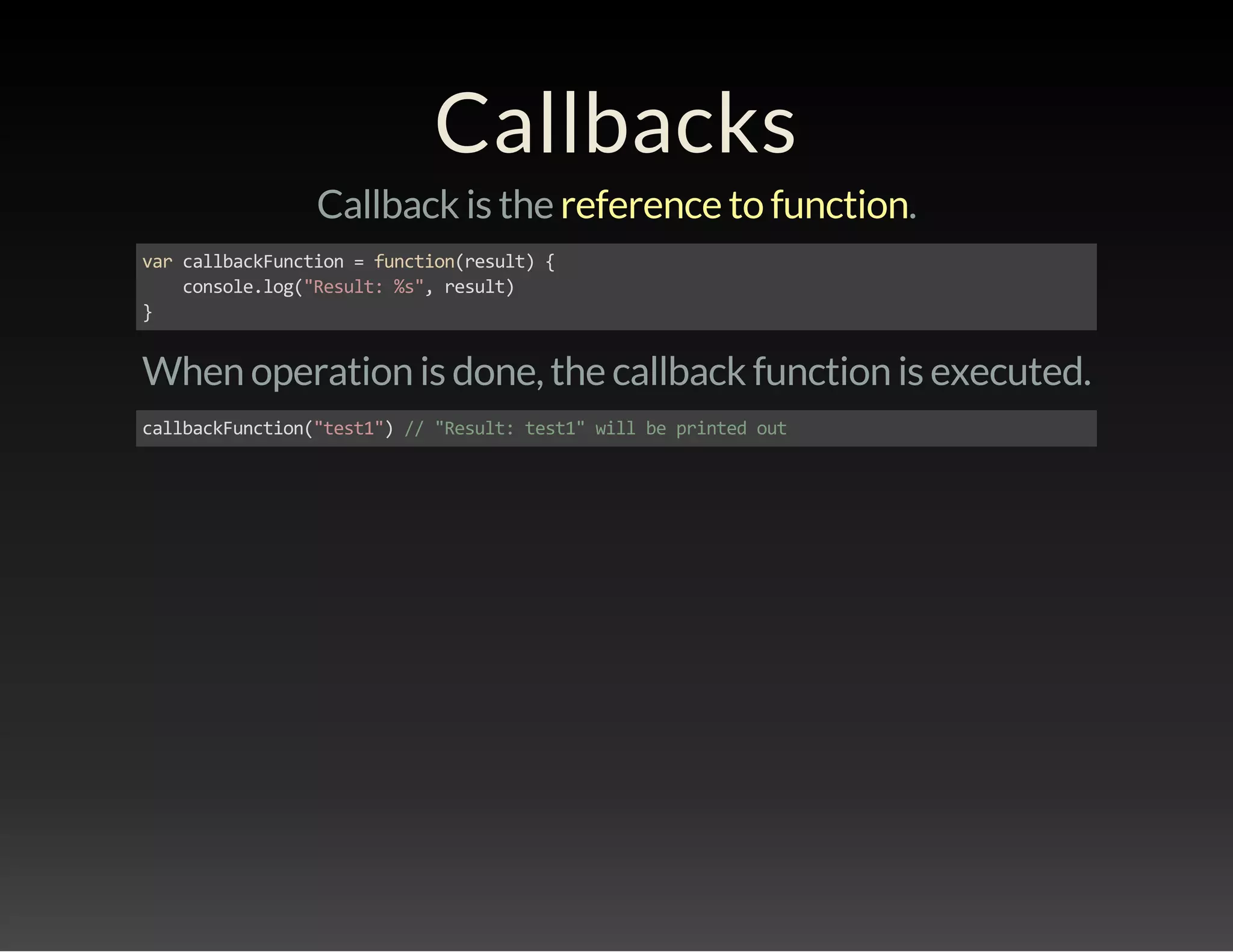
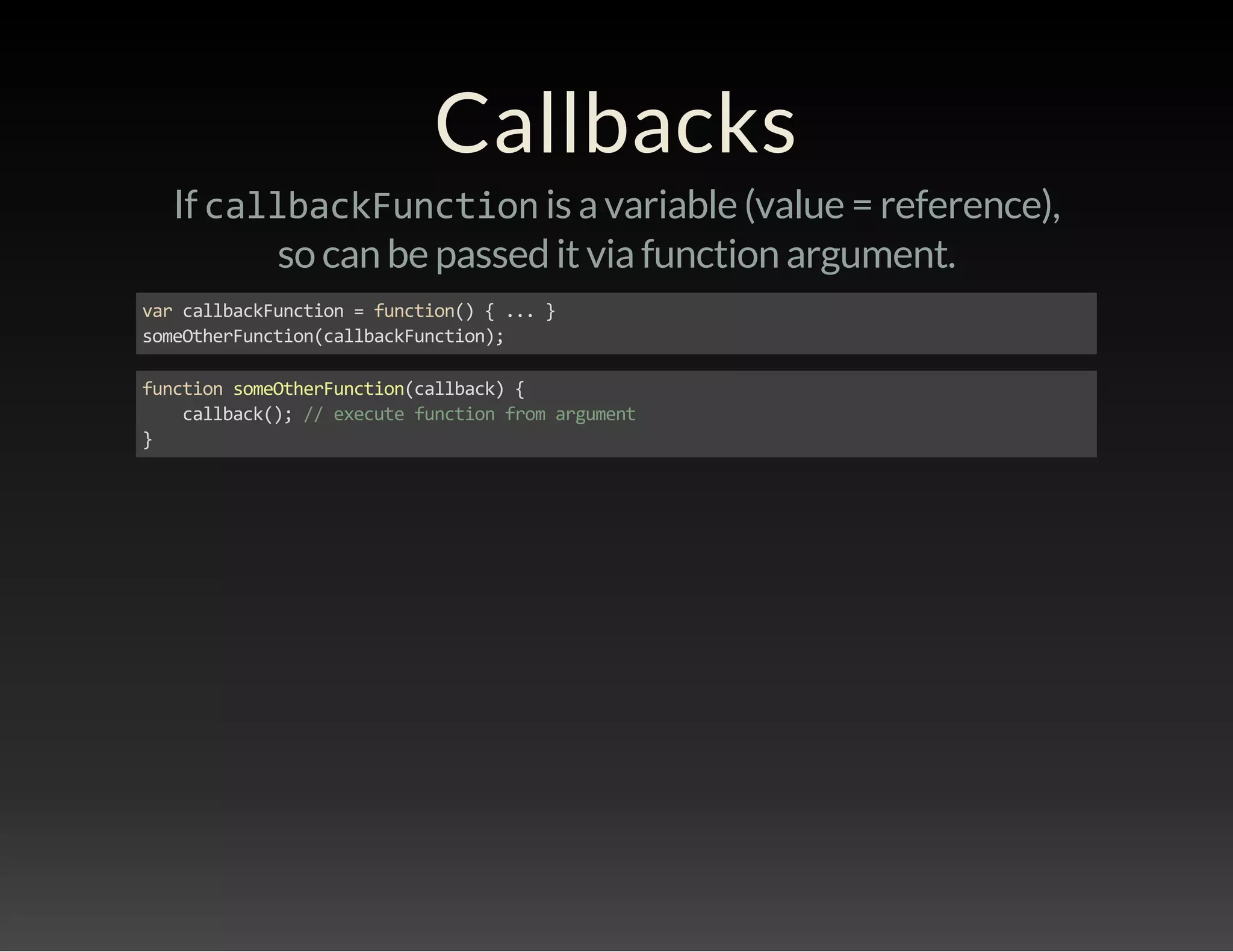
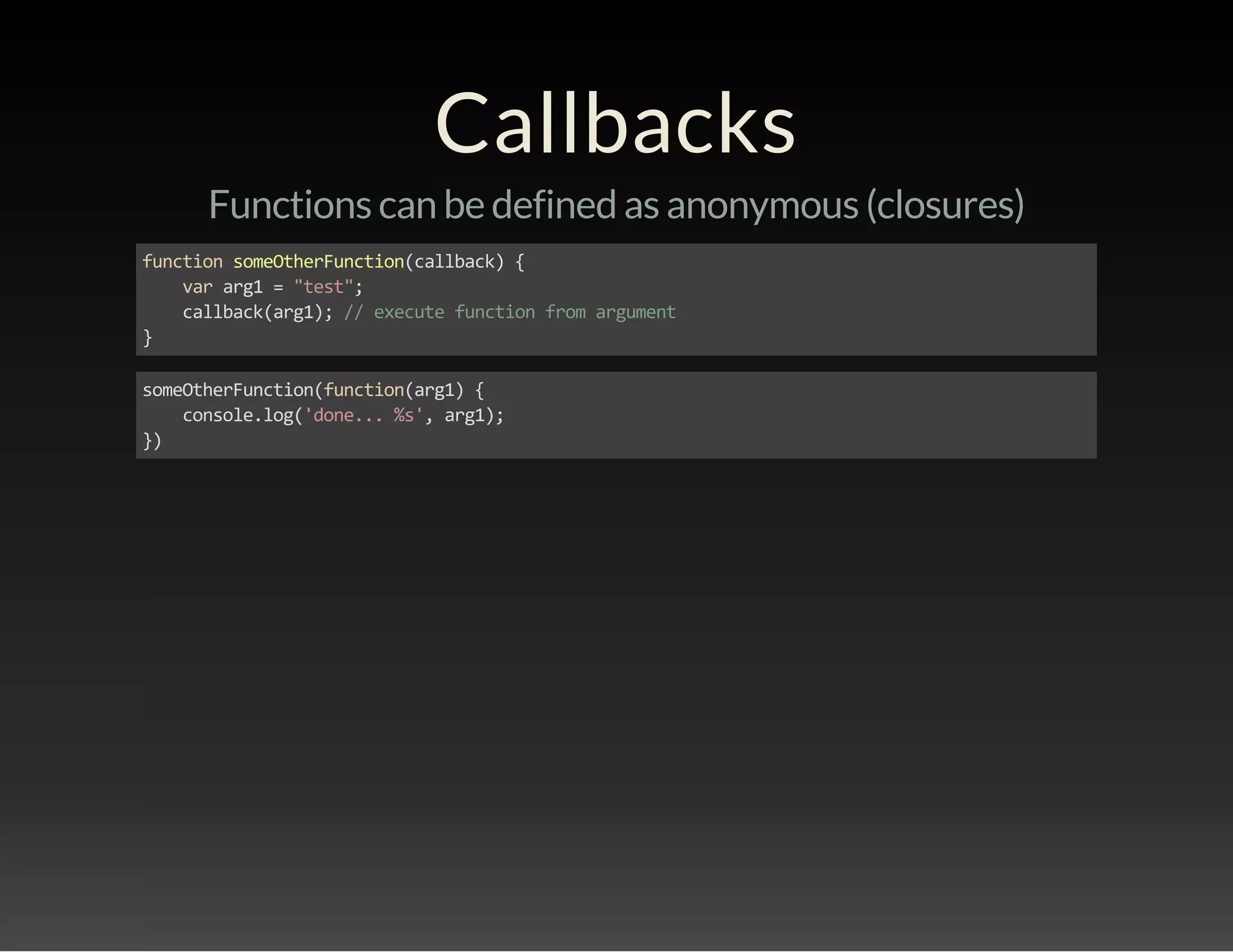
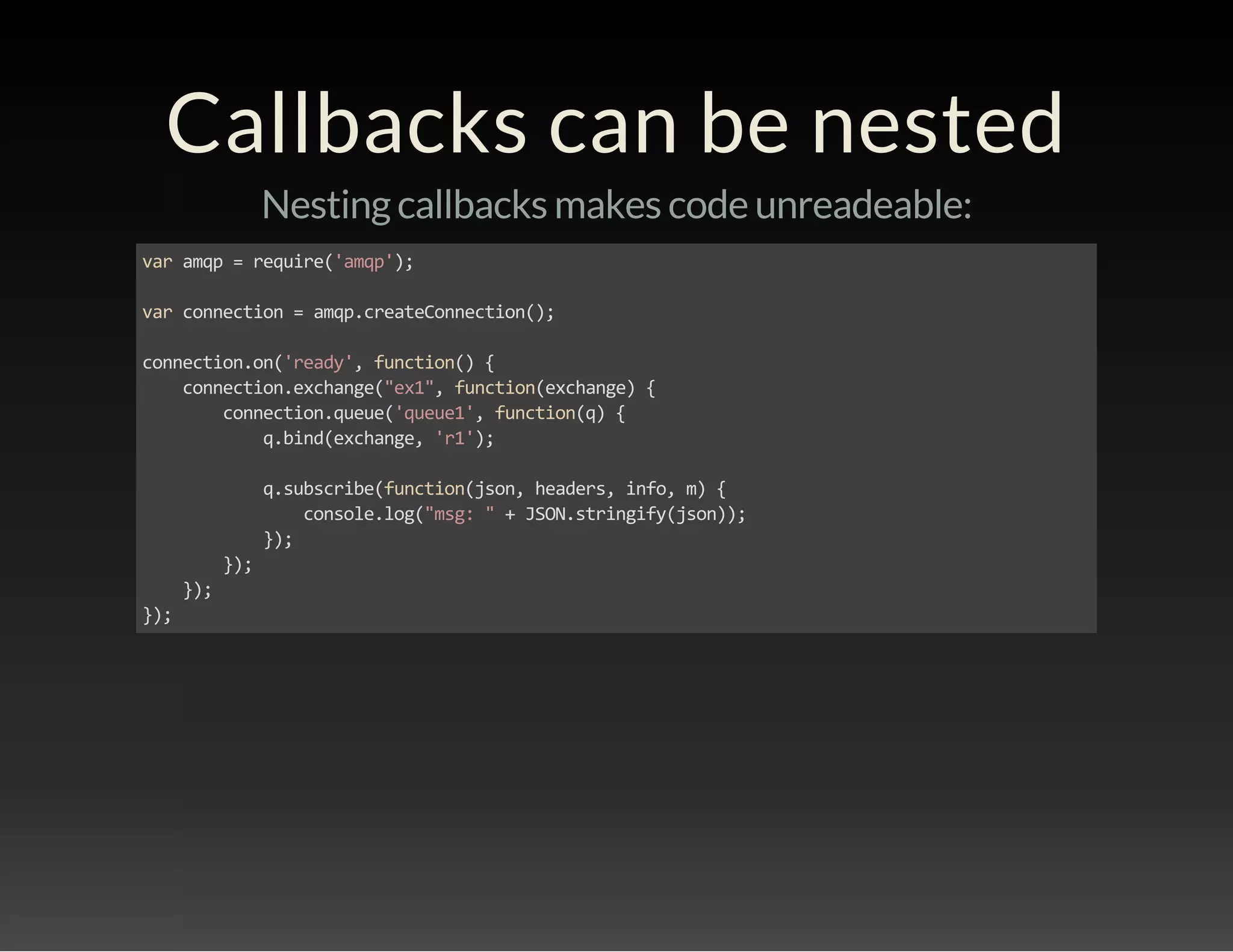
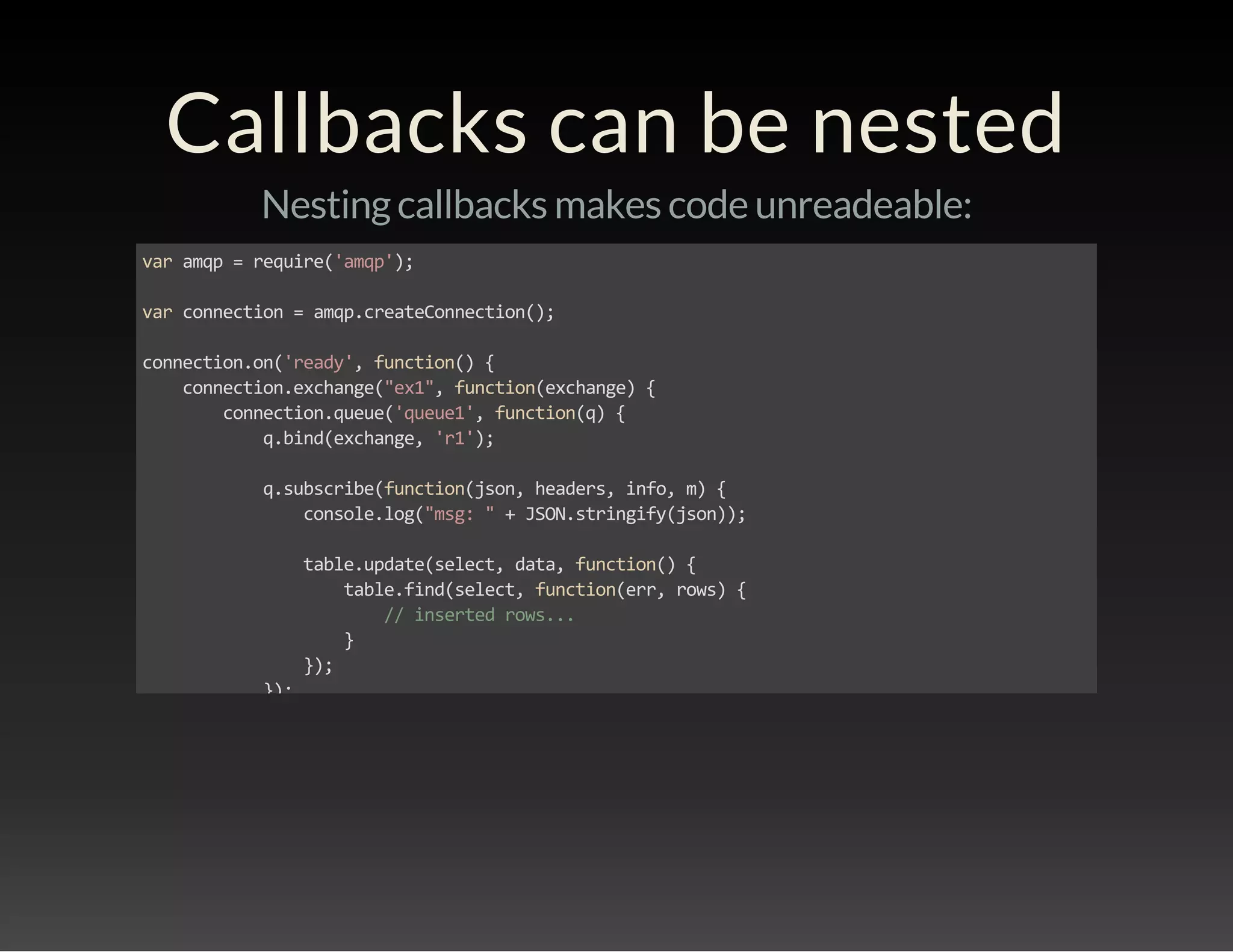
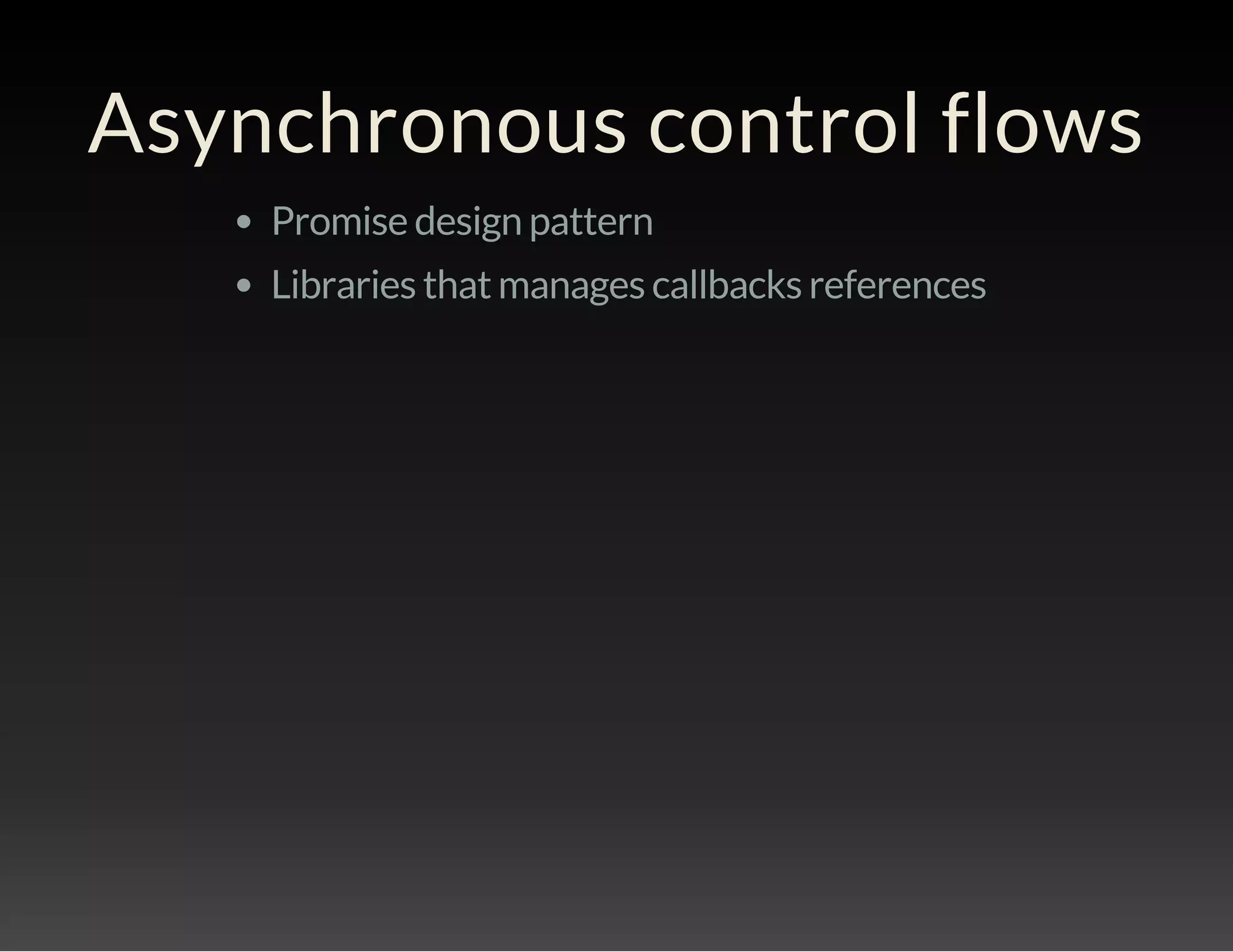
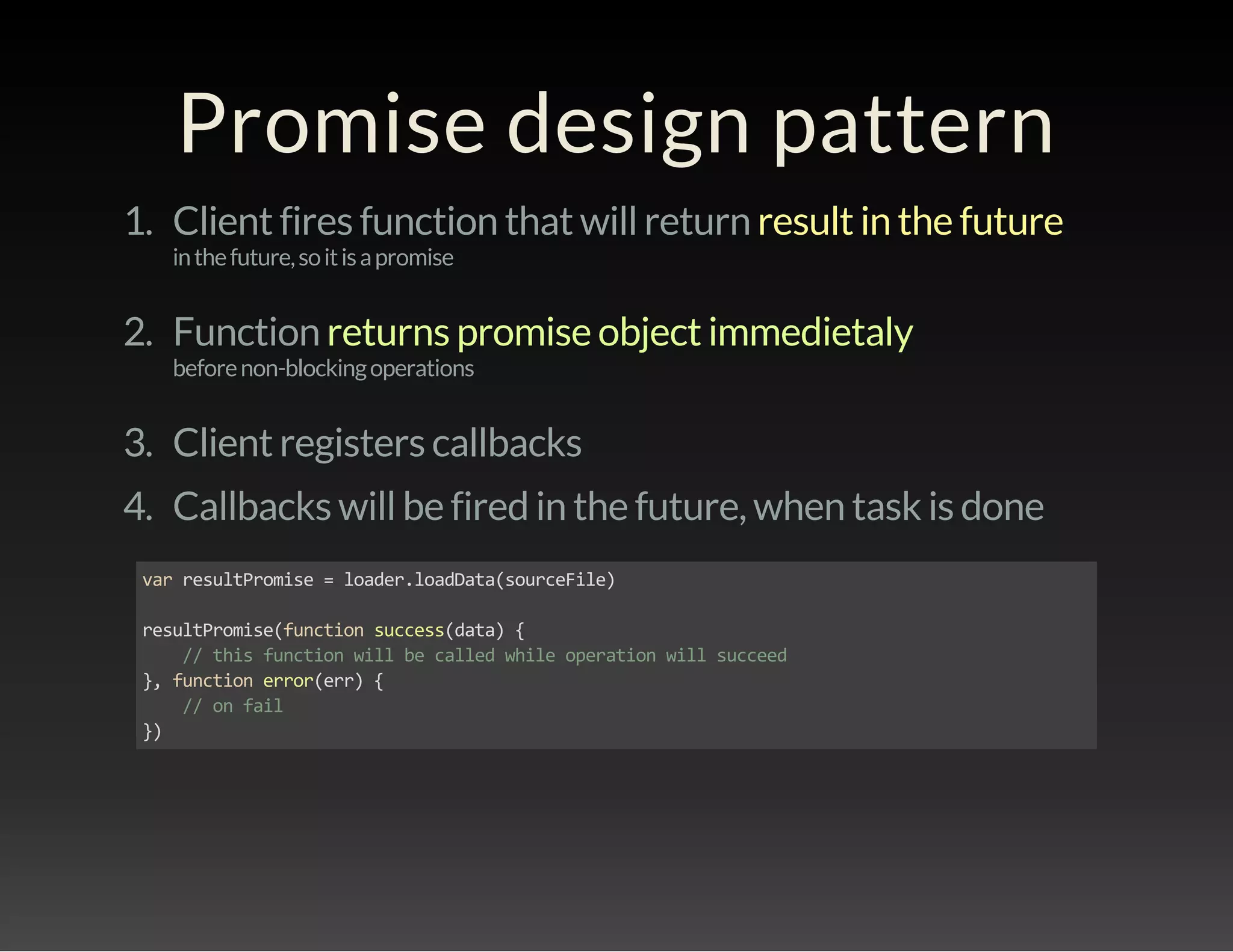
![Promise design pattern 1. Create deferred object 2. Return def.promise 3. Call resolve() or reject() var loadData = function(sourceFile) { var def = deferred() , proc = process.spawn('java', ['-jar', 'loadData.jar', sourceFile]) var commandProcessBuff = null , commandProcessBuffError = null; proc.stdout.on('data', function (data) { commandProcessBuff += data }) proc.stderr.on('data', function (data) { commandProcessBuffError += data }) proc.on('close', function (code) { if(null !== commandProcessBuffError) def.reject(commandProcessBuffError) else def.resolve(commandProcessBuff) }) return def.promise }](https://image.slidesharecdn.com/asynchronousprogrammingdoneright-piotrpelczar-141027192121-conversion-gate02/75/Asynchronous-programming-done-right-Node-js-34-2048.jpg)

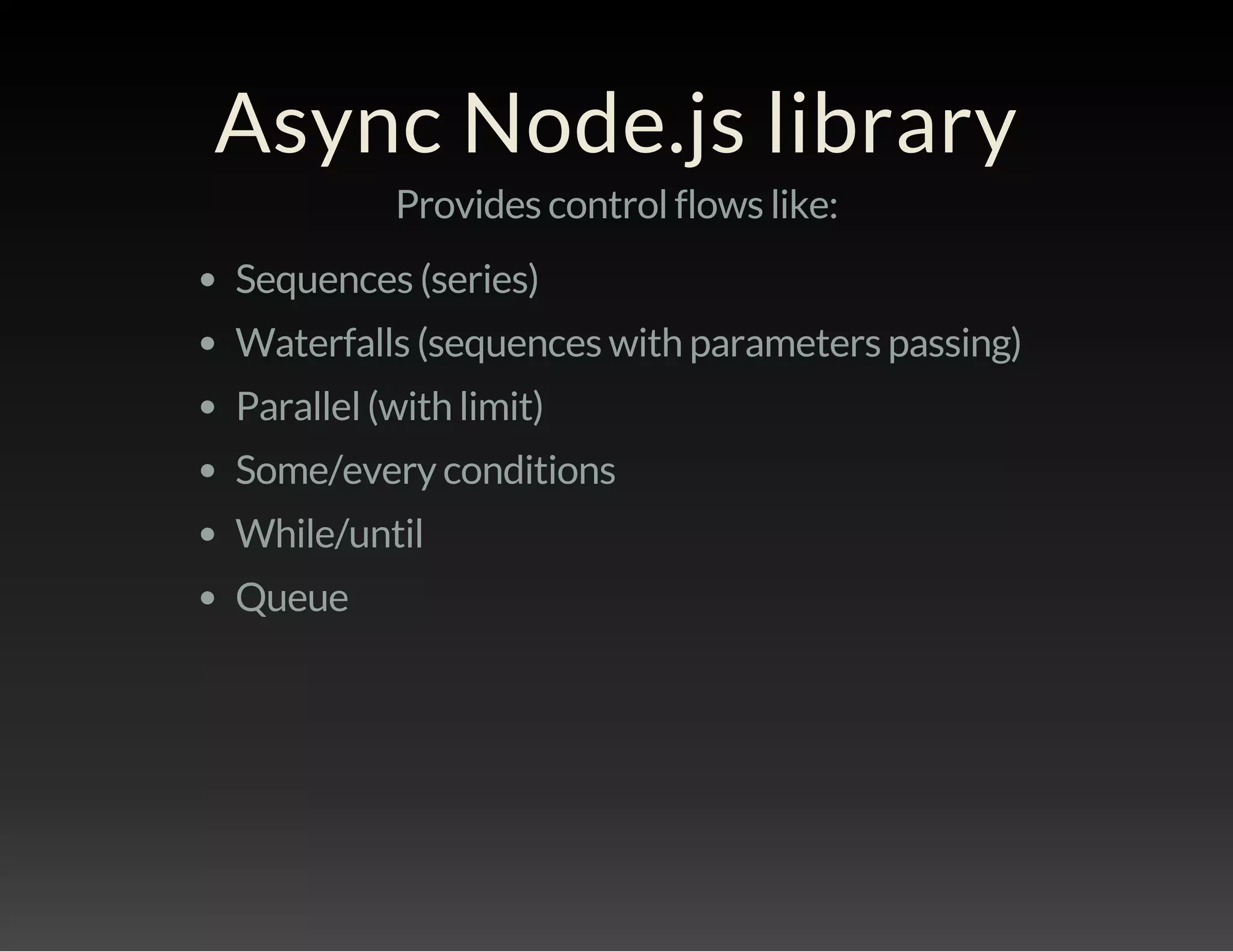
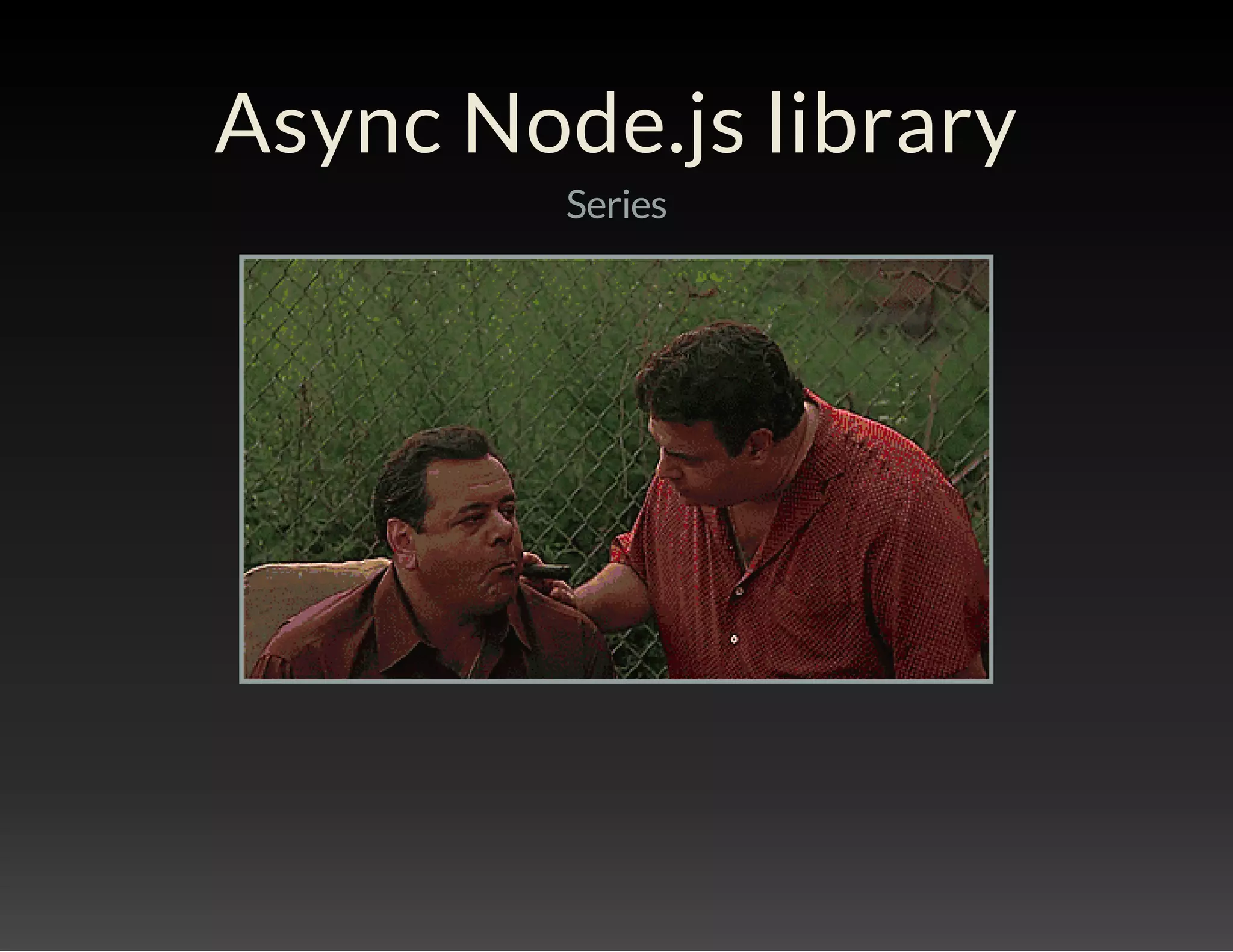
![Async Node.js library Series async.series([ function(callback) { // operation1 }, function(callback) { // operation2 }, function(callback) { // operation3 } ], function() { console.log('all operations done') })](https://image.slidesharecdn.com/asynchronousprogrammingdoneright-piotrpelczar-141027192121-conversion-gate02/75/Asynchronous-programming-done-right-Node-js-38-2048.jpg)
![Async Node.js library Parallel async.parallel([ function(callback) { // operation1 }, function(callback) { // operation2 }, function(callback) { // operation3 } ], function() { console.log('all operations done') })](https://image.slidesharecdn.com/asynchronousprogrammingdoneright-piotrpelczar-141027192121-conversion-gate02/75/Asynchronous-programming-done-right-Node-js-39-2048.jpg)

![Async Node.js library Parallel limit var tasks = [ function(callback) { // operation1 }, function(callback) { // operation2 }, // ... ] async.parallelLimit(tasks, 2, function() { console.log('all operations done') })](https://image.slidesharecdn.com/asynchronousprogrammingdoneright-piotrpelczar-141027192121-conversion-gate02/75/Asynchronous-programming-done-right-Node-js-41-2048.jpg)
![Async Node.js library Waterfall async.waterfall([ function(callback) { // operation1 callback(null, arg1, arg2) }, function(arg1, arg2, callback) { // operation2 callback(null, foo, bar) }, function(foo, bar, callback) { // operation3 } ], function() { console.log('all operations done') })](https://image.slidesharecdn.com/asynchronousprogrammingdoneright-piotrpelczar-141027192121-conversion-gate02/75/Asynchronous-programming-done-right-Node-js-42-2048.jpg)
![Async Node.js library Whilst async.doWhilst( function(done) { // operation1 done(null, arg1, arg2) }, function() { return pages < limit } ], function() { console.log('done') })](https://image.slidesharecdn.com/asynchronousprogrammingdoneright-piotrpelczar-141027192121-conversion-gate02/75/Asynchronous-programming-done-right-Node-js-43-2048.jpg)
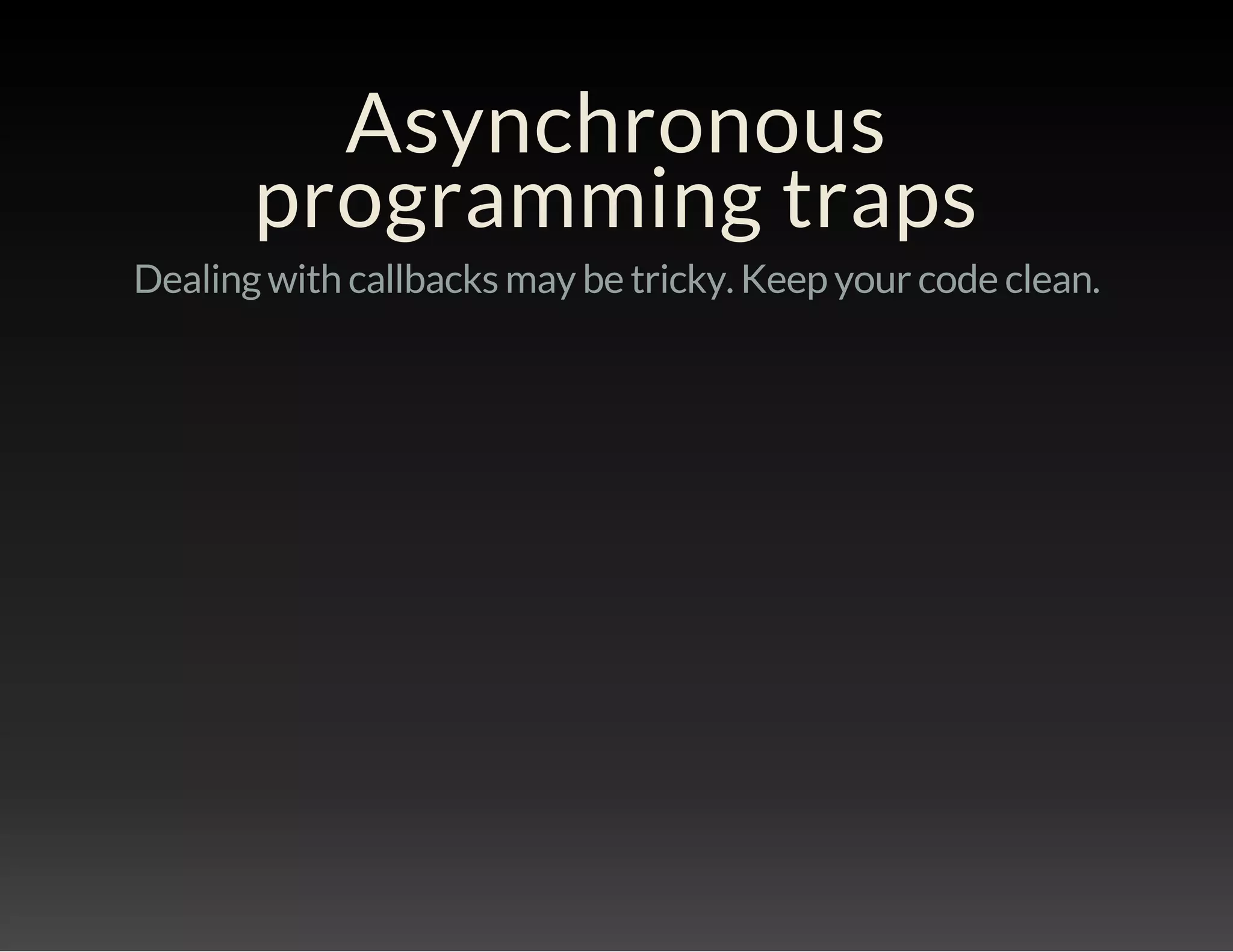
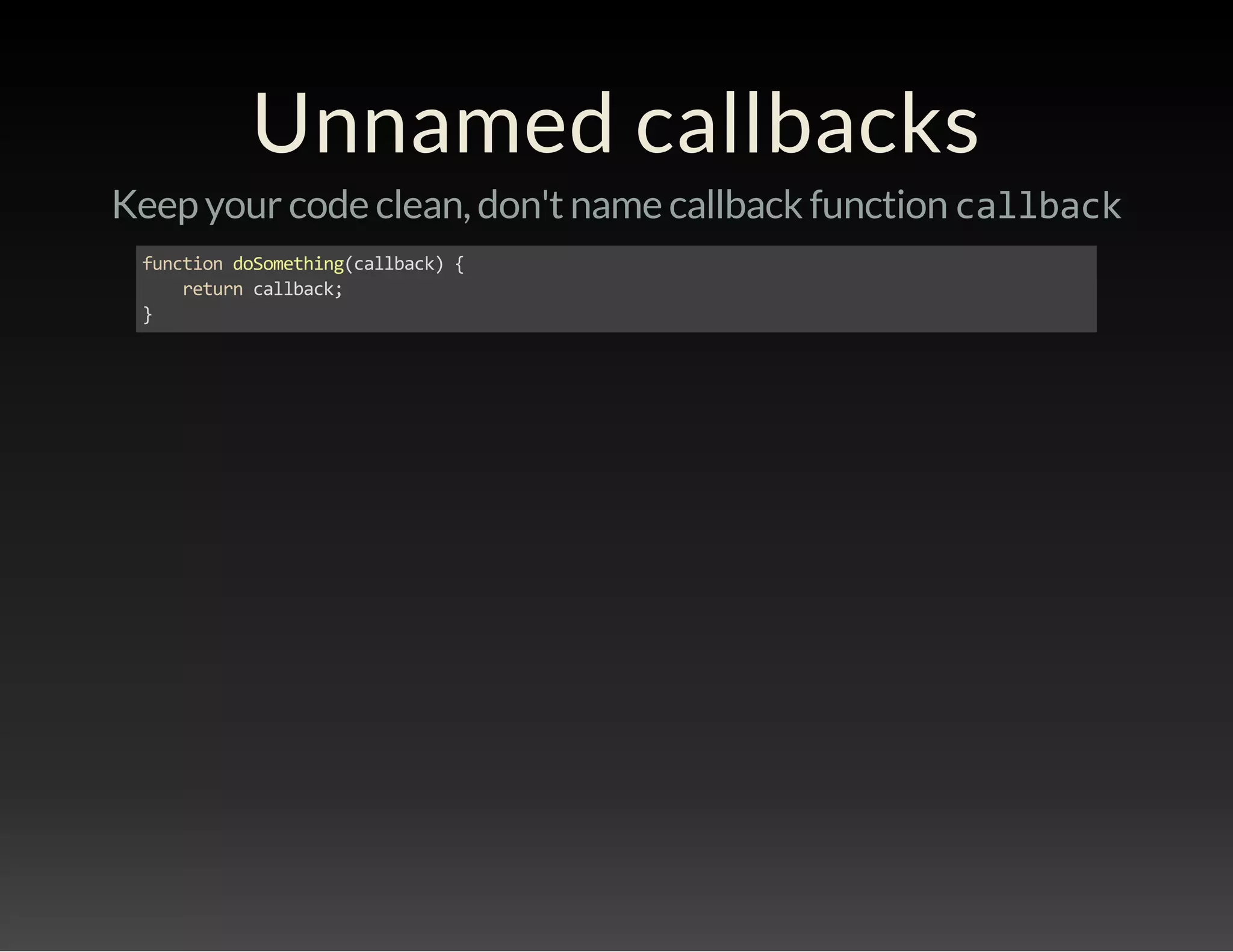
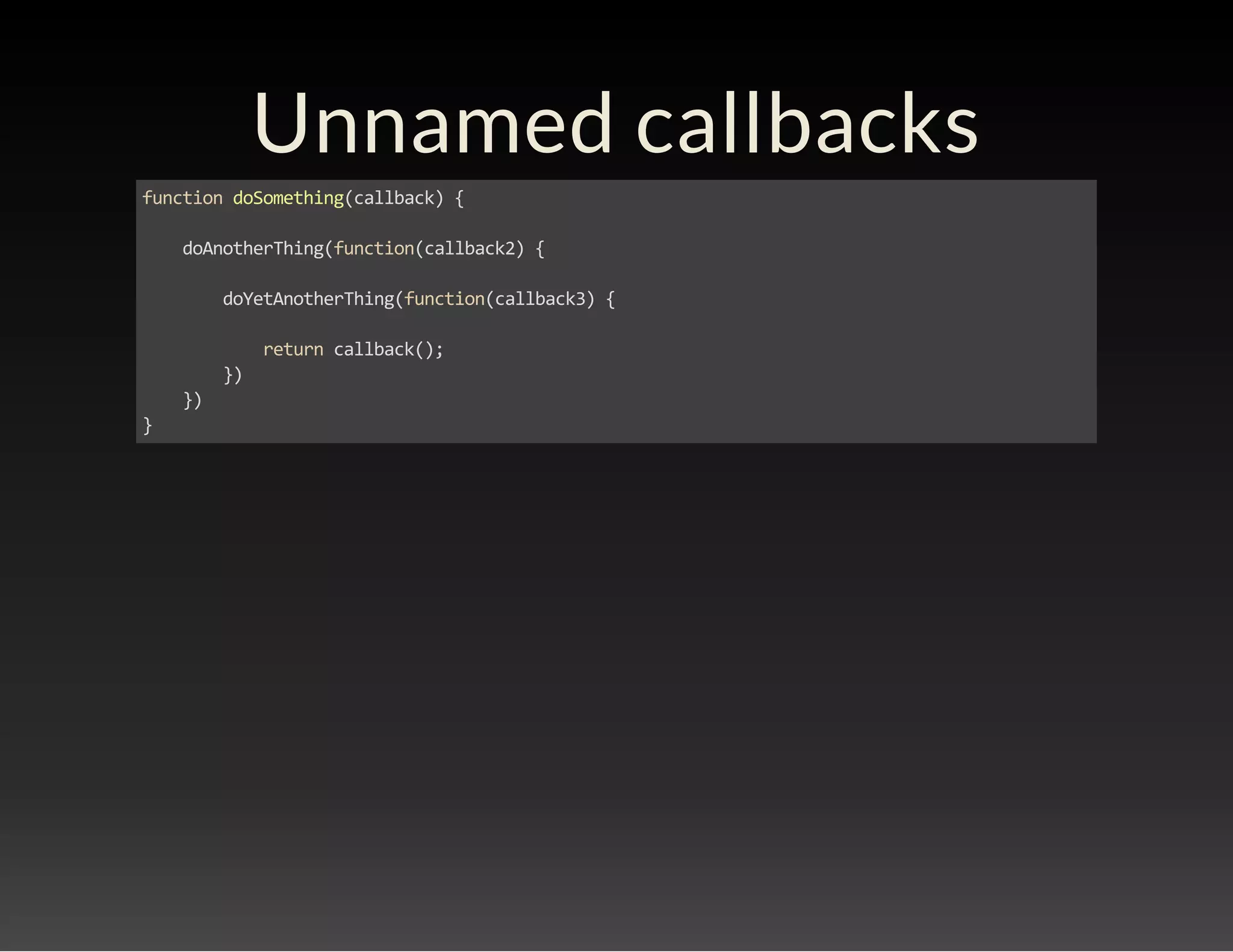
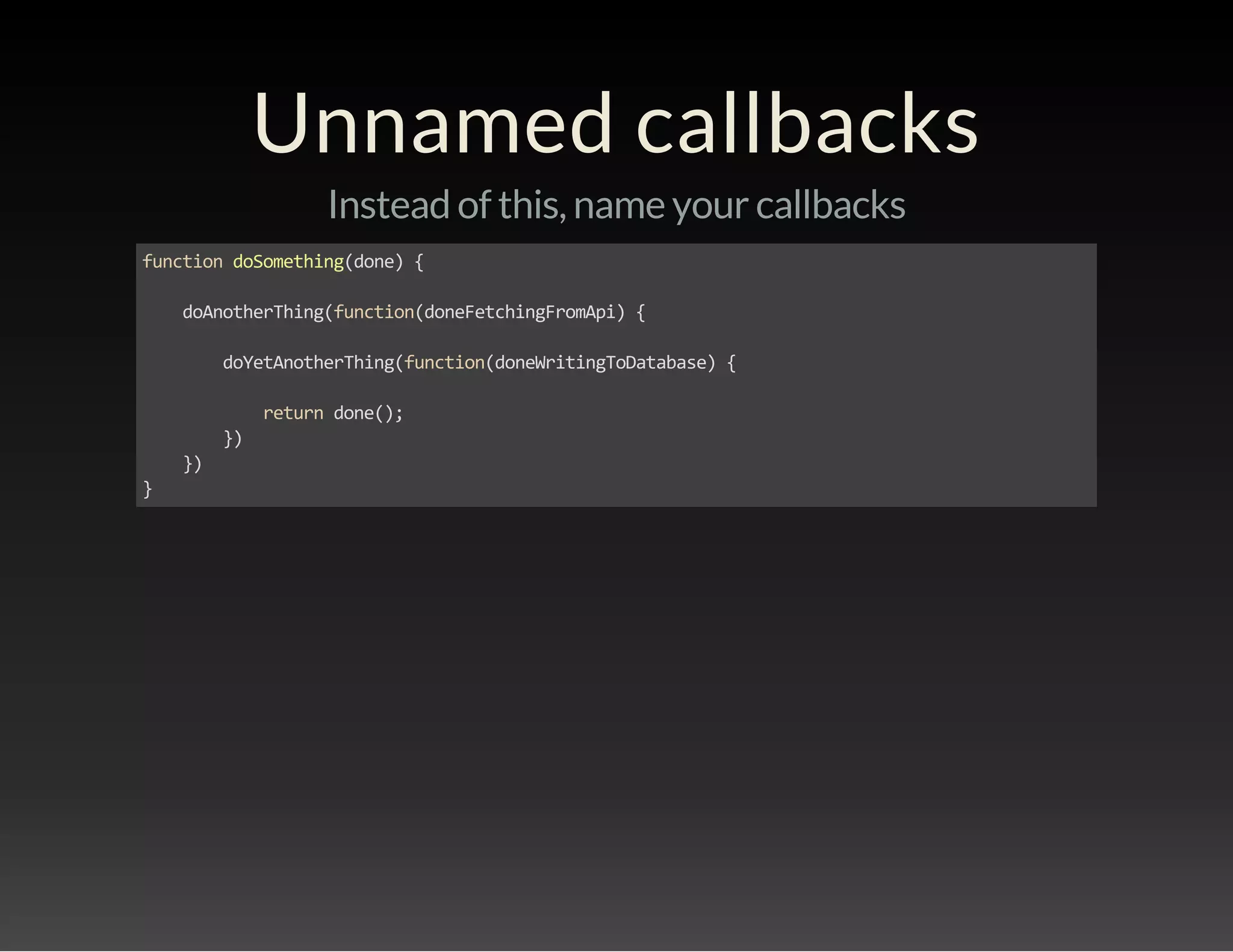
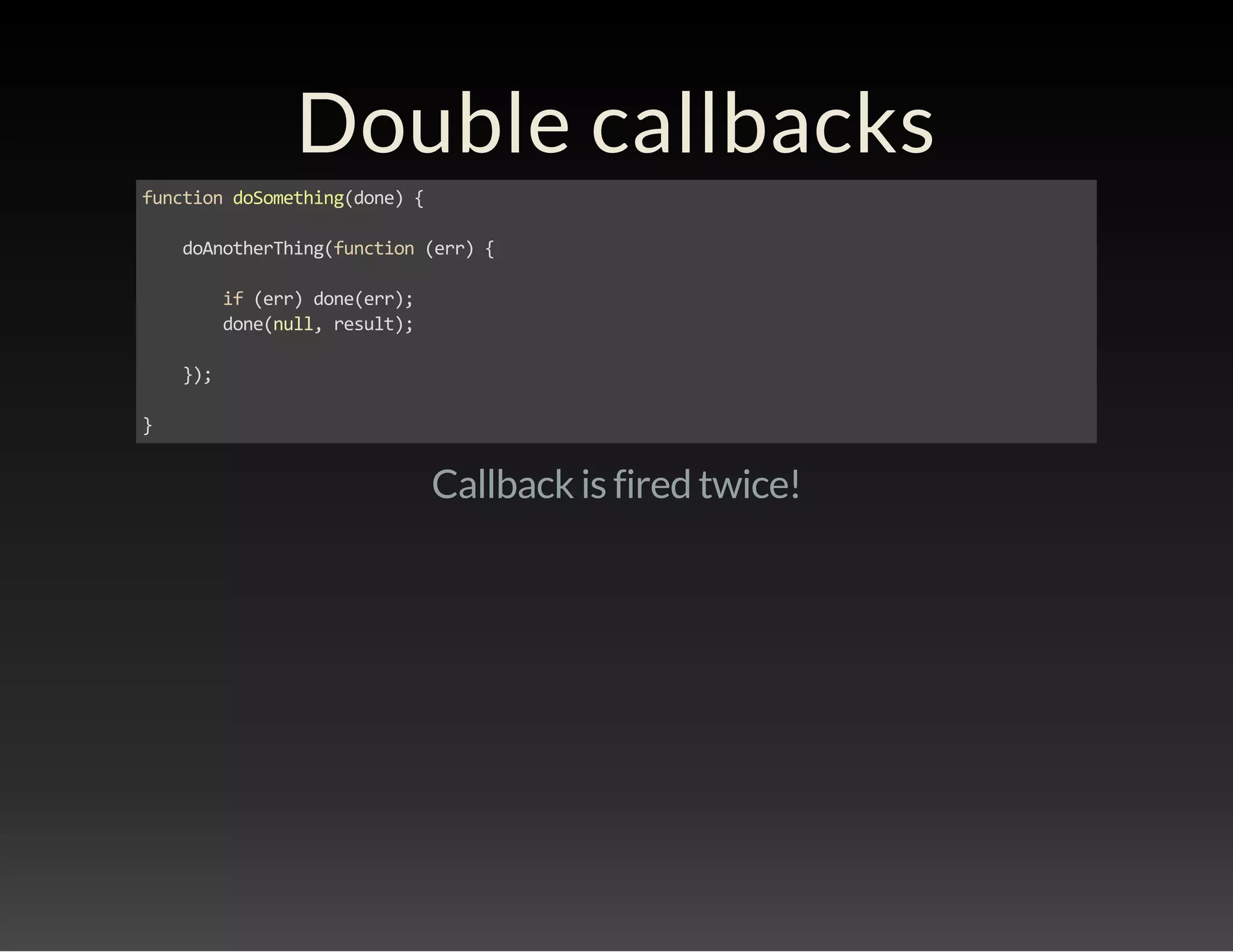
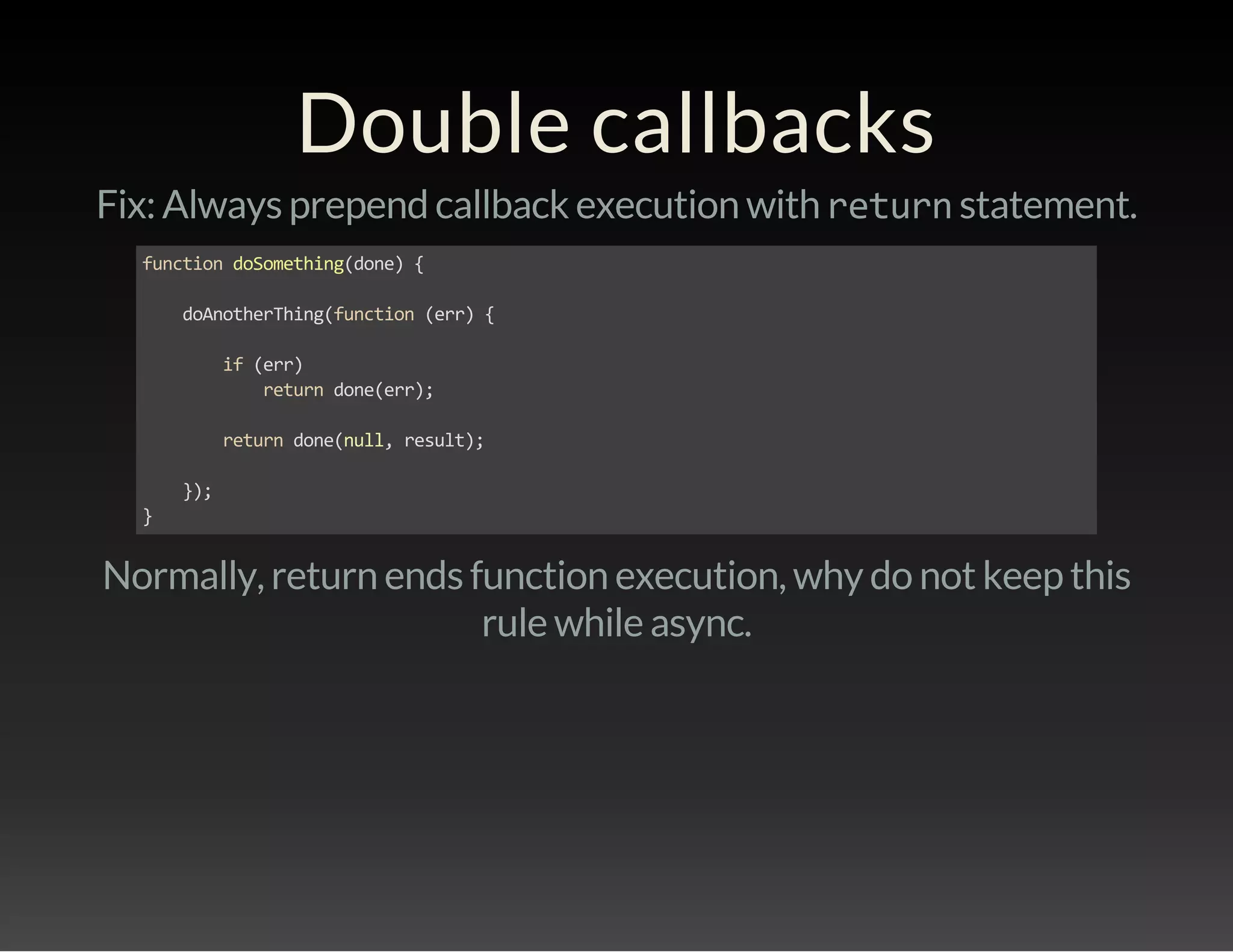
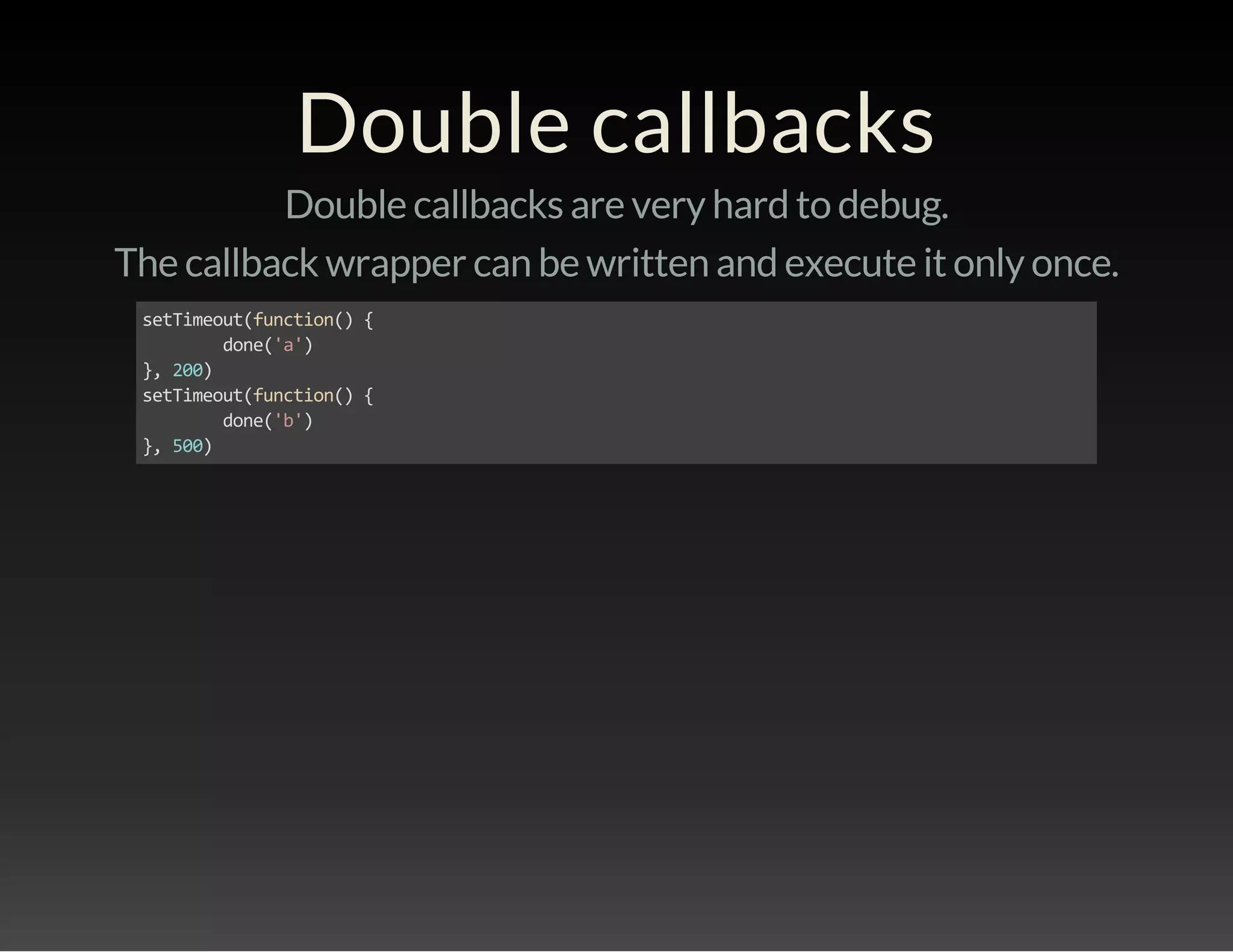
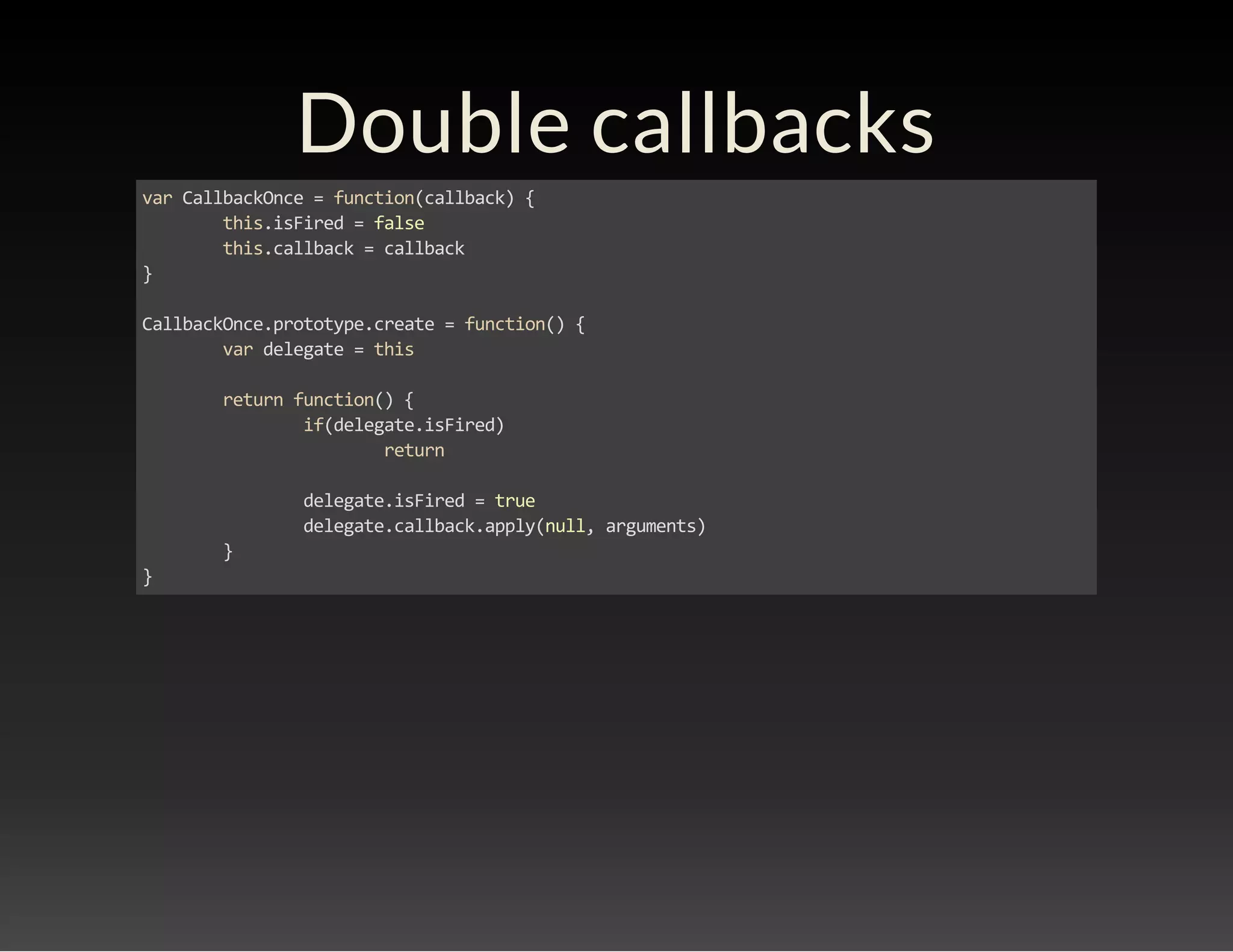
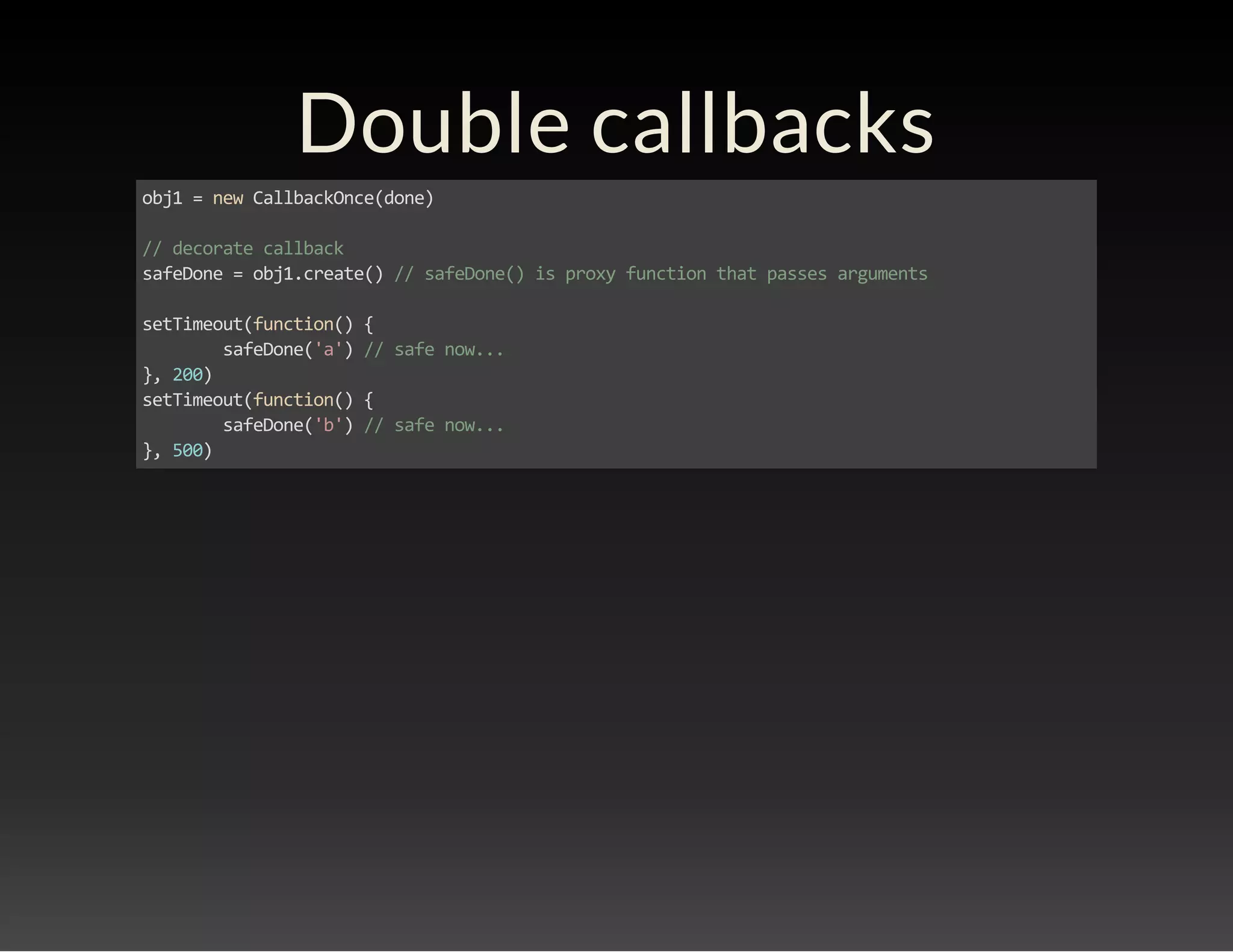
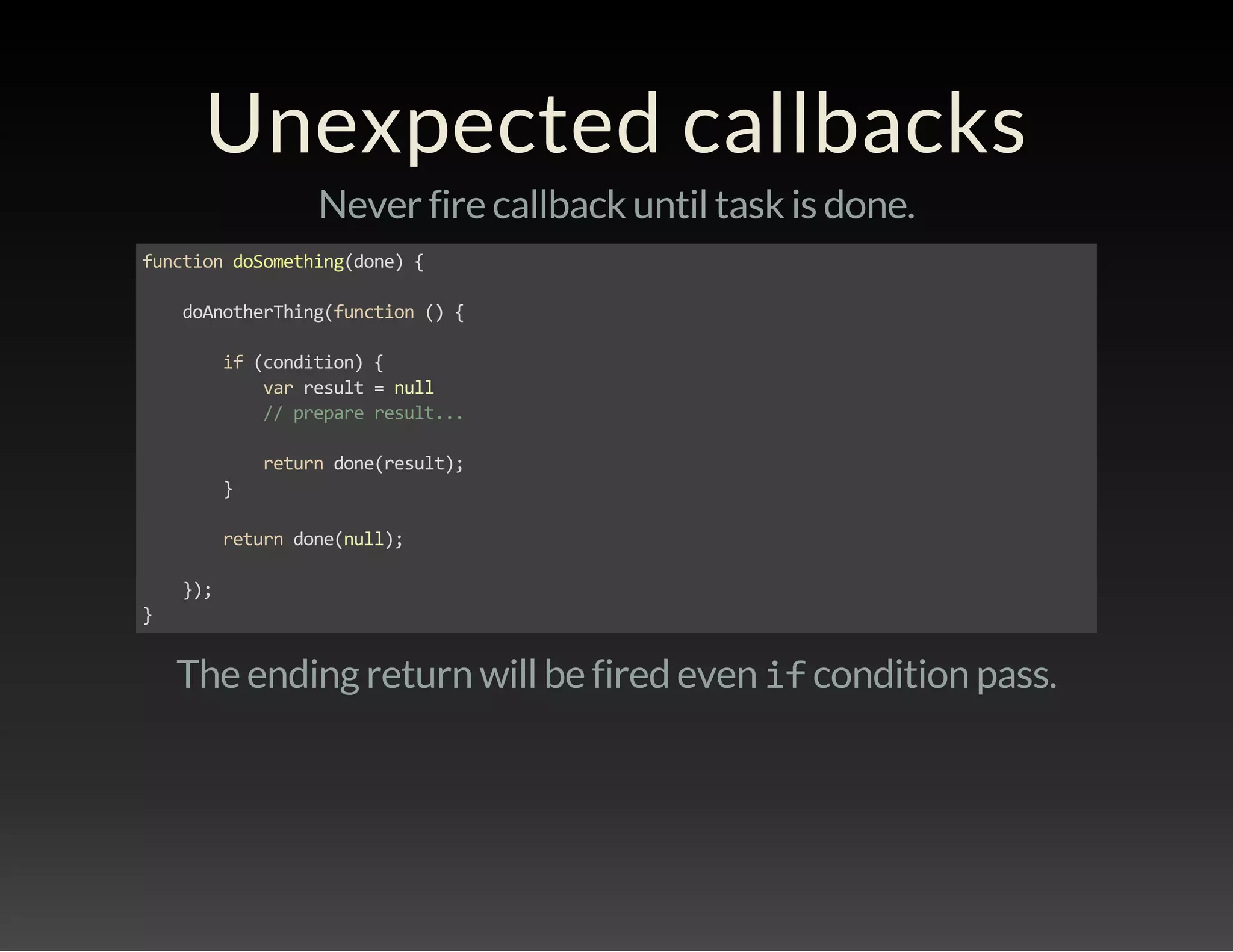
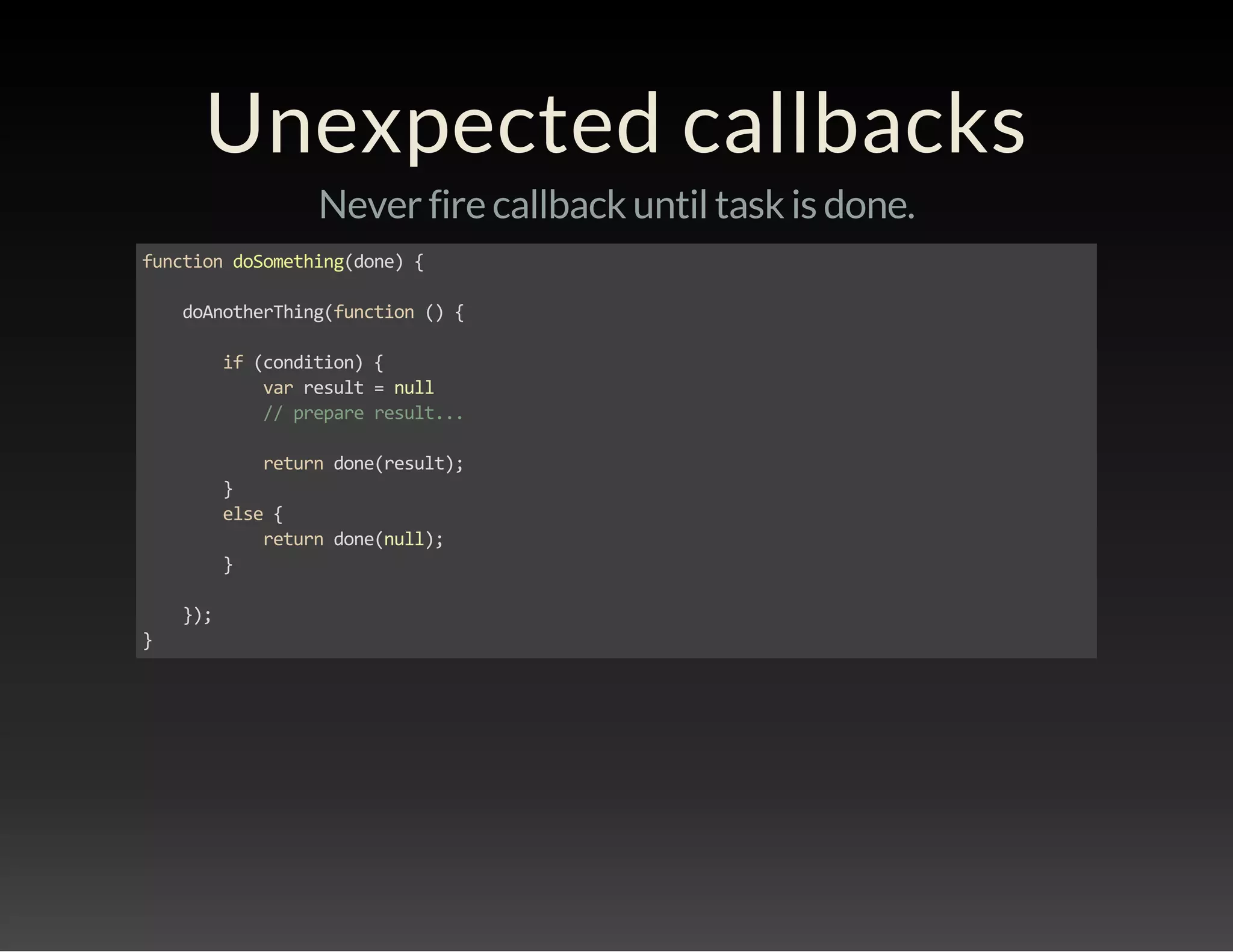
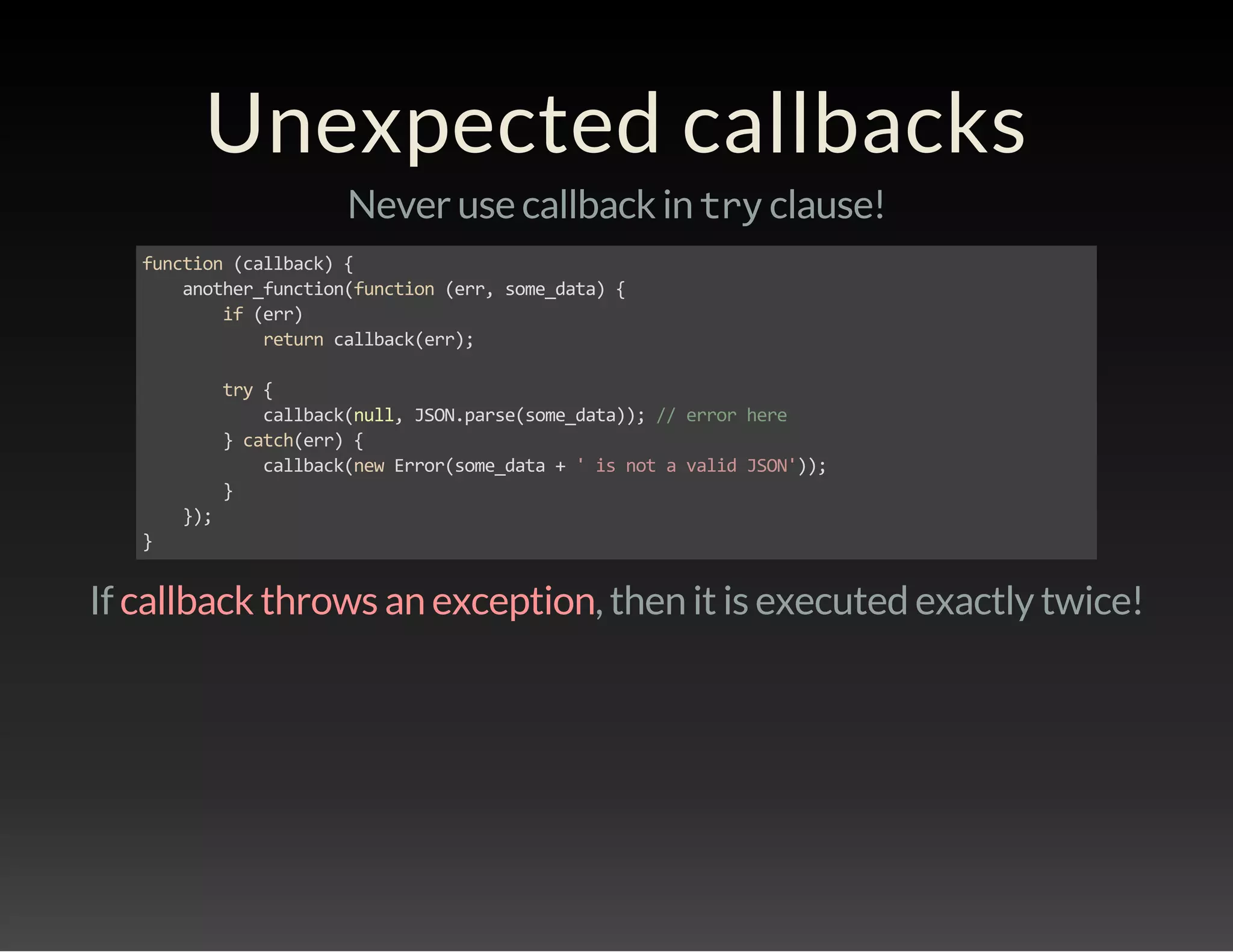
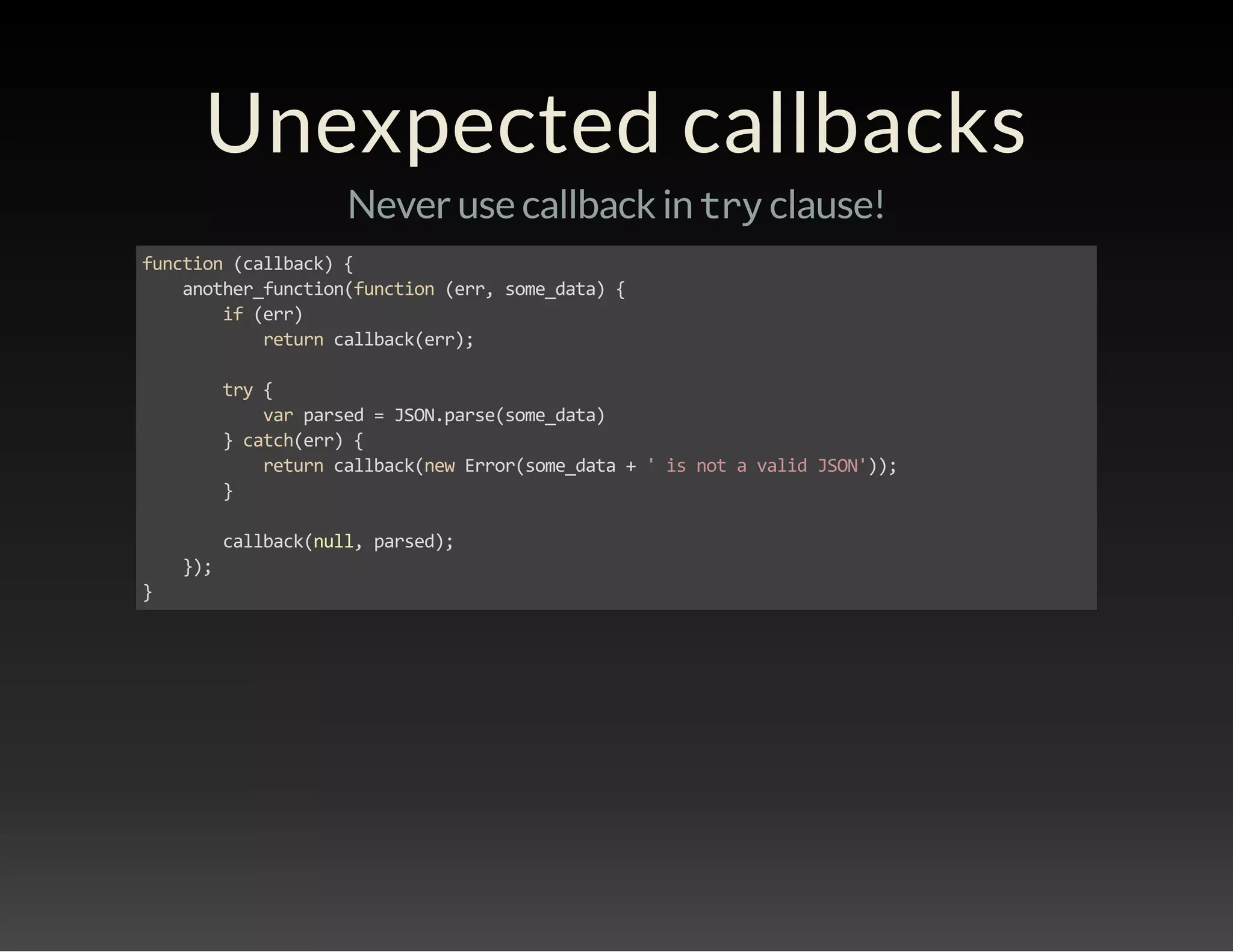
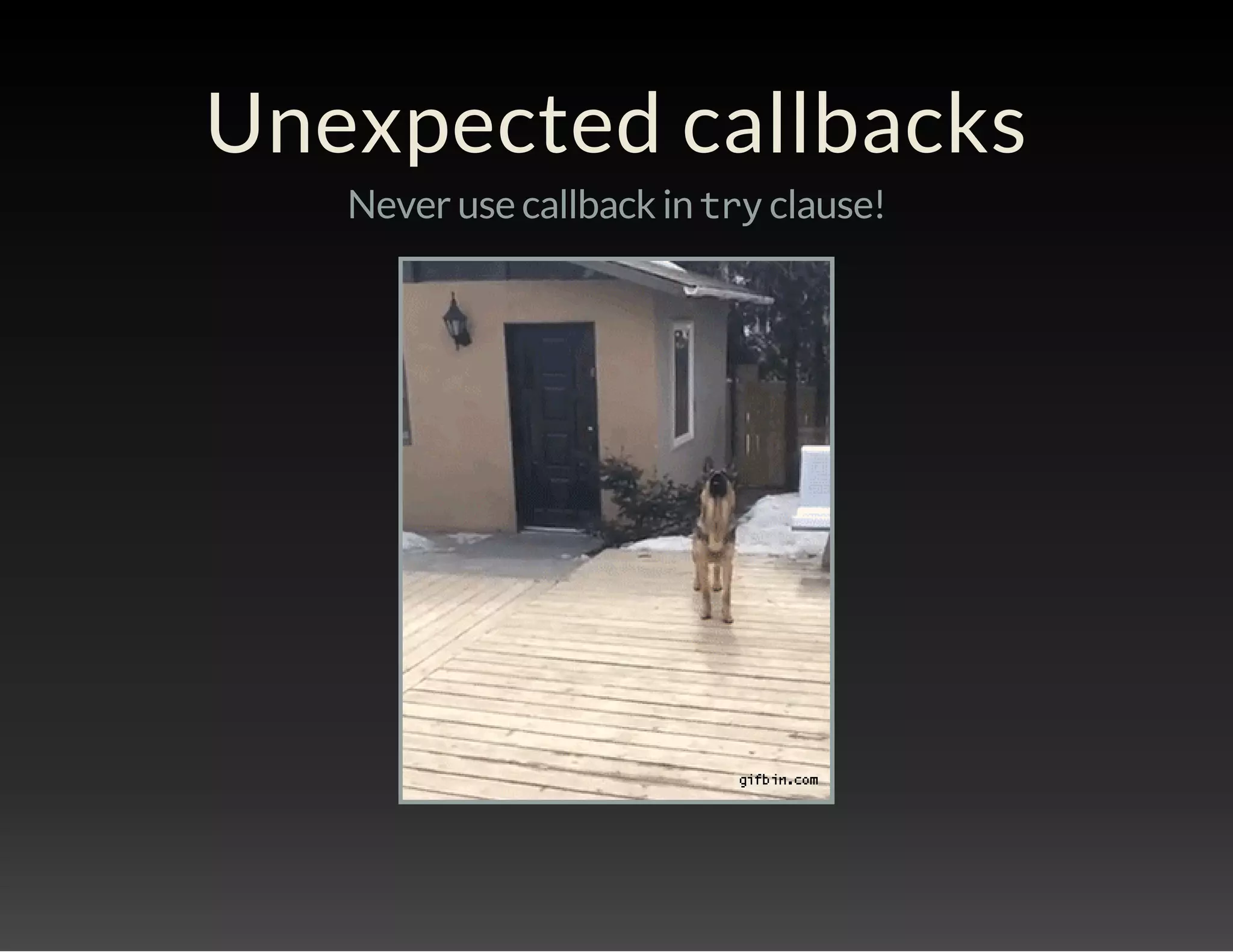
![Take care of events Read docs carefully. Really. function doSomething(done) { var proc = process.spawn('java', ['-jar', 'loadData.jar', sourceFile]) var procBuff = ''; proc.stdout.on('data', function (data) { procBuff += data; }); // WAT?! proc.stderr.on('data', function (data) { done(new Error("An error occured: " + data)) }); proc.on('close', function (code) { done(null, procBuff); } }](https://image.slidesharecdn.com/asynchronousprogrammingdoneright-piotrpelczar-141027192121-conversion-gate02/75/Asynchronous-programming-done-right-Node-js-58-2048.jpg)
![Take care of events Read docs carefully. Really. function doSomething(done) { var proc = process.spawn('java', ['-jar', 'loadData.jar', sourceFile]) var procBuff = ''; var procBuffError = ''; proc.stdout.on('data', function (data) { procBuff += data; }); proc.stderr.on('data', function (data) { proc += data; }); proc.on('close', function (code) { if(code !== 0) { return done(new Error("An error occured: " + procBuffError)); } else { return done(null, procBuff) } } }](https://image.slidesharecdn.com/asynchronousprogrammingdoneright-piotrpelczar-141027192121-conversion-gate02/75/Asynchronous-programming-done-right-Node-js-59-2048.jpg)
